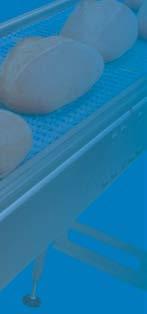

 Markel Bakery Group Company
Markel Bakery Group Company





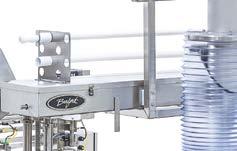

















 Markel Bakery Group Company
Markel Bakery Group Company




















The iba trade fair (International Bakery Exhibition) takes place every three years. Nearly 1,300 exhibitors will be present in Munich from September 15 to 20, 2018. The event organizers again expect more than 77,000 visitors from the whole world. It’s simply the leading trade fair for the baking sector worldwide this year. But other event organizers have also done their homework well, and the IBIE (International Baking Industry Exposition) in Las Vegas (September 8 to 11, 2019) is likewise without question a world-class trade fair, and Interpack (May 7 to 13, 2020) is also always worth a visit. Fortunately, the event organizers have arranged the dates in such a way that the corresponding international trade fairs don’t all occur in the same year, and there are no overlaps. And to ensure that life in the sector doesn’t become boring, there really are more trade fairs such as the südback, Bakery China and Modern Bakery, as well as trade fairs in the Middle East etc. etc.
++ Bastian Borchfeld, Editor-in-Chief
Your commments or suggestions are always appreciated: phone: +49 40 39 90 12 28 borchfeld@foodmultimedia.de

But the one that is about to take place is the iba. During a round of discussions with leading European baked products manufacturers, I asked why the trade fair is visited. The unanimous answer: On the lookout for innovations, and cultivating and expanding the network. The trade fair offers visitors both. Many plant constructors show their latest developments, and raw materials suppliers also present themselves and their products. Maintaining and expanding contacts simply happens incidentally.
At the same time, however, a question that arises over and over again is whether there is enough on offer for visitors from smaller businesses. There are still many artisan bakers, especially in Germany, for whom an industrial line, e.g. to produce baguettes or hamburger buns, means absolutely nothing. The iba responds to this with an artisan guide, for example, or celebrates “German Bakers’ Day” or the “German Confectioners’ Day” on September 16 and 19 respectively. These are certainly smart ideas and approaches to a solution.
Personally, I can recommend a visit to the trade fair to everyone. It’s simply a performance show of plant construction as well. And for smaller bakeries, it’s also worthwhile looking at how the industry works, and at the kinds of ideas that can possibly be put into practice, or discovering trends and counter-trends. Therefore I wouldn’t allow myself to be drawn into making a distinction between “industry” and “artisans” in the first place, because there’s no clear answer or a clear division in any case.
Admittedly, every one of us would like to know what our neighbor is doing, and the iba gives exhibitors and visitors an opportunity to look outside of the proverbial box for once.
I also look forward to the visit, and hope to see many familiar faces again in Munich, as well as getting to know some new ones.
Best Regards,


Ours knows a good deal. Industry-specific processes, integration of machines and systems, monitoring and reporting, traceability, quality management and much more.


The CSB-System is the business software for the bread and bakery goods industry. The end-to-end solution encompasses ERP, FACTORY ERP and MES. And best-practice standards come as part of the package.
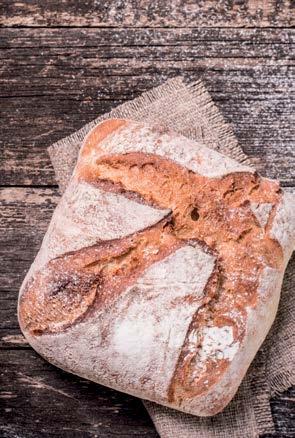
Would you like to know exactly why industry leaders count on CSB?

Production
06 Fireking Baking Company:
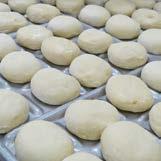
PUBLISHING COMPANY
f2m food multimedia gmbh Ehrenbergstr. 33
22767 Hamburg, Germany
+49 40 39 90 12 27
www.foodmultimedia.de
PUBLISHER
Hildegard M. Keil
+49 40 380 94 82 keil@foodmultimedia.de
EDITOR-IN-CHIEF
Bastian Borchfeld
+49 40 39 90 12 28 borchfeld@foodmultimedia.de
EDITORIAL STAFF
Helga Baumfalk +49 40 39 60 30 61 baumfalk@foodmultimedia.de
Silke Liebig-Braunholz

+49 (0)40 386 167 92 liebig-braunholz@foodmultimedia.de
ADVERTISING DEPT.
International sales director
Dirk Dixon
+44 14 35 87 20 09 dixon@foodmultimedia.de
Advertisement administration
Wilfried Krause +49 40 38 61 67 94 krause@foodmultimedia.de
DISTRIBUTION
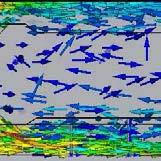
+49 40 39 90 12 27 vertrieb@foodmultimedia.de
TRANSLATION
Skript Fachübersetzungen Gerd Röser info@skript-translations.de
TYPESETTING
LANDMAGD in der Heide Linda Langhagen; design@landmagd.de
PRINTED BY
Leinebergland Druck GmbH & Co. KG Industriestr. 2a, 31061 Alfeld (Leine), Germany
BAKING+BISCUIT INTERNATIONAL is published six times a year. Single copies may be purchased for EUR 15.– per copy. Subscription rates are EUR 75.– for one year. Students (with valid certification of student status) will pay EUR 40.– (all rates including postage and handling, but without VAT).
Cancellation of subscription must be presented three month prior to the end of the subscription period in writing to the publishing company. Address subscriptions to the above stated distribution department. No claims will be accepted for not received or lost copies due to reasons being outside the responsibility of the publishing company. This magazine, including all articles and illustrations, is copyright protected. Any utilization beyond the tight limit set by the copyright act is subject to the publisher’s approval.
Online dispute resolution in accordance with Article 14 Para. 1 of the ODR-VO (European Online Dispute Resolution Regulation): The European Commission provides a platform for Online Dispute Resolution (OS), which you can find at http://ec.europa.eu/consumers/odr
Valid advertising price list: 2018
photo: ©





Gregory Acerra founded the Fireking Baking Company in Boston, USA, in 1995 to offer freshly-baked European-style bread to restaurants, clubs and catering companies. Within a short time. Fireking became well-known as a baking industry innovator.
The restaurateur Gregory Acerra, founder of the American Fireking Baking Company, Braintree, Massachusetts, has already received various awards for his entrepreneurial skills, e.g. from “The Small Business Administration” (SBA). The SBA honored the Fireking Baking Company as “Manufacturer of the Year 2016 for Massachusetts”. Robert Nelson, District Director von SBA Massachusetts, explained that Gregory Acerra received this distinction not only for creating many new jobs in the region but also because he manufactured baked products with their own unique quality. Since founding the bakery in 1995, Acerra has made a name for
himself as a baking industry innovator. It all started with his Tosca Restaurant in Hingham. Gregory Acerra really wanted to offer his guests high-quality artisan-made bread. But none of the suppliers fulfilled the requirements.
Fortunately for the restaurateur, a vacant gas station opposite the restaurant was up for sale – so Acerra bought the building and opened the Fireking Baking Company together with a bistro. Half of the building was used as the restaurant, and two former service sheds were converted into a small bakery where two employees then produced baked goods for Gregory Acerra’s restaurants. Only a few months later, a major restaurant chain in Boston was enquiring about breads, and the news spread by word of mouth that the high-quality breads at the Fireking Baking Company were distinctly different from other baked products. Demand grew, the bakery also grew, and so did the distribution area. The operation soon moved to a building of around 40,000 ft2 (approx. 3,720 m2) in Braintree, MA. Around 114 staff now produced fresh and frozen baked goods, which were bought by customers from the entire USA. Growth was sustained, and a 25,000 ft 2 (approx. 2,320 m 2) enlargement of the production facility was necessary. Today the company employs a workforce of more than 140, and the range of baked goods in the premium segment has grown. In addition to various bread rolls, the bakery produces hamburger buns, brioche variants, ciabatta and focaccia as well as European-style special breads.

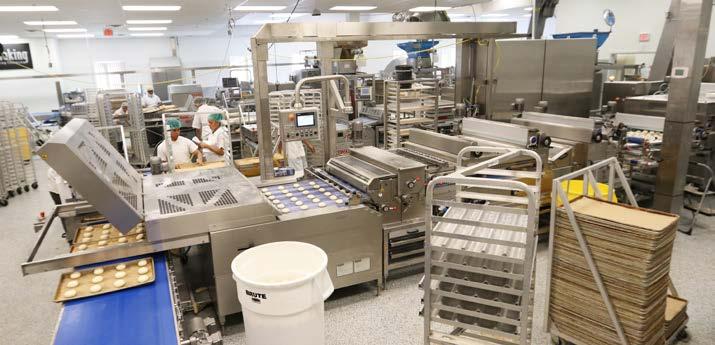
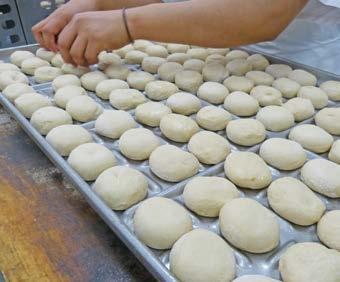


The range of baked products now includes over 300 types of baked goods produced for the catering trade, the retail and as private label. For example, items baked using fresh herbs or fresh eggs are produced to continue to distinguish them from competitors. Extra native olive oil is also used. Fresh goods are produced every day, but customers can also order frozen products through a national distribution network. The production unit operates on six days a week. On the seventh day the production facility is intensively cleaned and the plants serviced.
Gregory Acerra says “Although artisan breads are still baked and manufactured by hand, the majority of the baked goods are produced using a gentle semi-automatic manual process.” The ultimate aim is to produce European-style baked goods, so consequently most of the plants in the production facility are from Europe. Explaining his strategy, Acerra says “I obtained information about European plant constructors, at the iba trade fair in Munich for example, and had the various machines explained to me during the trade fair.” Good experience with the supplier Koenig in Graz, Austria, has led to a wide variety of machines being present in the factory. For example, the employees have used Koenig’s DW 240-H twin twist mixer since 2016, the “H” standing for hygiene model. This allows the mixer to be completely wash-down with low-pressure water.
Other characteristic features include:
+ The machine frame and machine head have a fully-sealed welded design
+ Stainless steel claddings and switchgear cabinet
+ Drain holes in the baseplates of the machine frame and machine head
+ Stainless steel friction wheel adapter
+ Friction wheel adapter with low-pressure water drain
+ Dust-tight mixing bowl cover
+ Touch-panel has IP65 ingress protection
The mixer’s two tools with a special spiral work at an angle to each other, thus increasing the input of mechanical energy
into the dough, which shortens the mixing time. This method also incorporates more air and oxygen. This is why the twin twist mixer machine with a 240 kg dough capacity is especially suitable for wheat and fine pastry doughs.

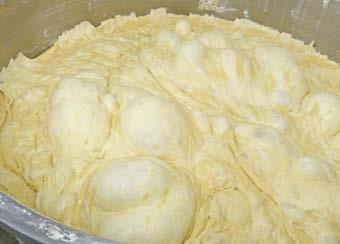

Fireking relies on a Menes dough sheeter with an 800 mm working width for dough processing. The plant has an infeed system. With all usable grades of dough, especially soft doughs with a rather long bowl resting time, the infeed creates a uniform, structurally homogeneous dough sheet from gently divided blocks of dough sheet. In addition, the infeed has an option to superimpose two dough sheet halves to assist the volume yield and dimensional stability of the products.
The infeed is followed by a Twin-Sat. The Twin-Sat double satellite head is an essential component of every Menes plant. It produces a practically stress-free dough sheet. At the same time, the double satellite head uses two satellite roller heads arranged one above the other to reduce high mechanical stressing.
The Twin-Sat is followed by a vibro-roller station to widen the dough sheet. The dough sheet is guided through a cylindrical upper roller and a conveyor belt below which there is a screwshaped shaft. The dough thickness is reduced by pulsating movements, and the dough is gently pushed outwards from the center. The eccentric arrangement also causes the dough
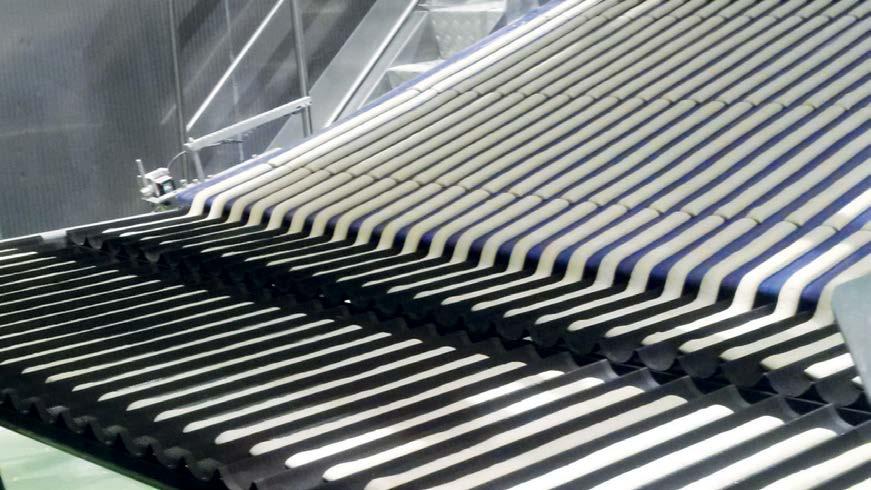
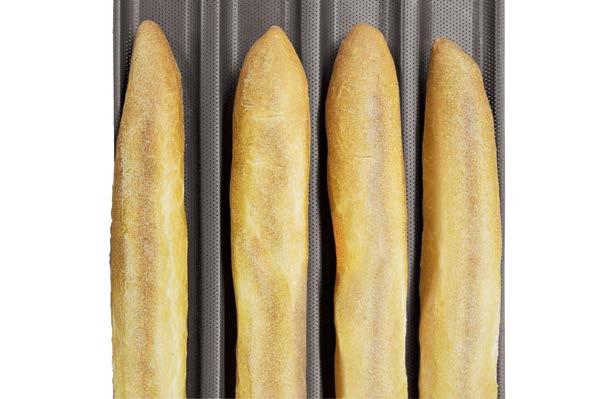
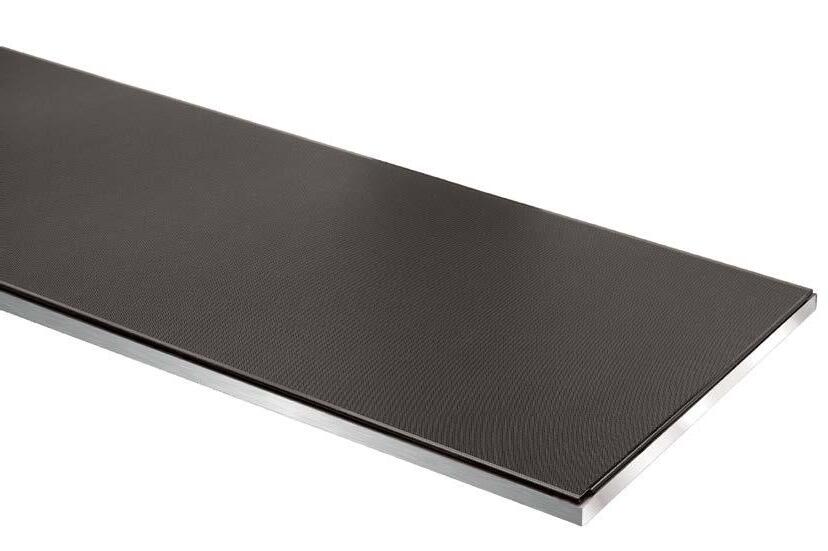
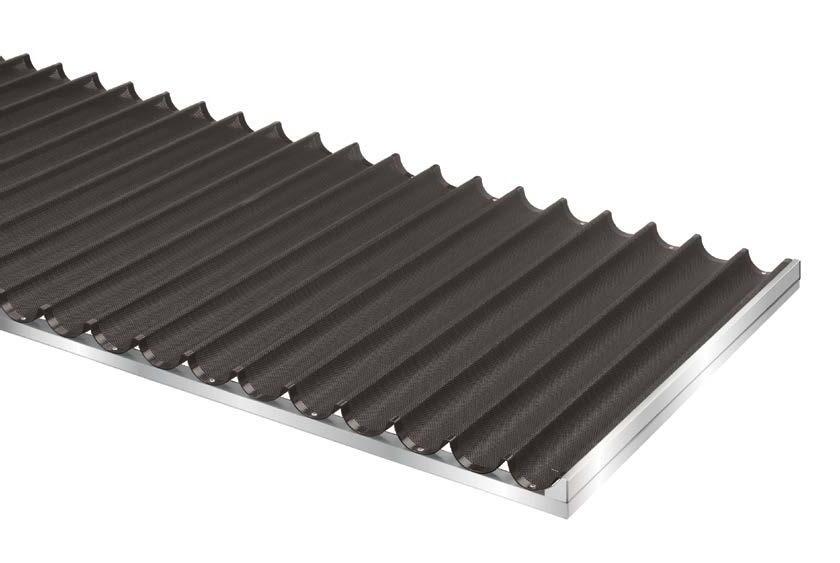
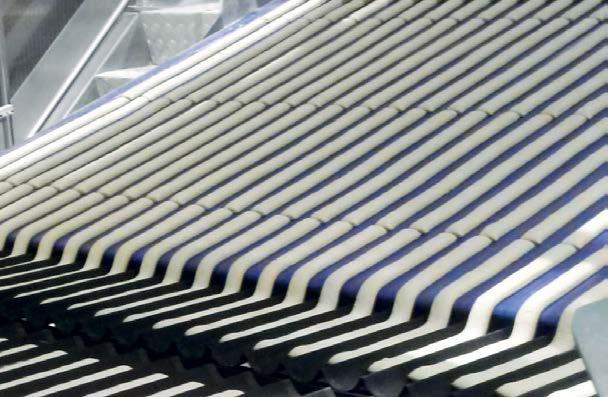

to experience repeated short-duration relaxation during the treatment process. Moreover, a cross-roller and smoothing roller station ensure that the dough sheet thickness is further reduced. Next, a longitudinal cutter unit cuts the dough sheet into dough strands which a cross-cutter cuts to length and/or shape. Scrap dough is picked up by a conveyor belt specially designed for this purpose, and can be fed via a transverse belt into the mixer, for example. Fireking’s Menes line also has a molding station to long-roll and wrap the products. The bakery uses the line to produce items such as ciabatta, baguettes, special breads, hotdog buns, hoagies or hamburger buns.

Furthermore, Fireking has three bread roll lines in the bakery, two operating with a Rex Futura Multi und the newest roll line features an Industrie Rex for higher performance. “We are really excited about that machine. It is very fast, very accurate and it makes a great product. We make products like crusty rolls, lobster rolls, molded products, mini rolls with 16 or 18 grams and rolls with up to 150 grams,” says Gregory Acerra.
All lines have bowl tippers and large dough cones. The Rex Futura Multi dough divider-rounder machine produces a wide variety of dough pieces in a broad weight range from 17 to 245 g (for molded dough pieces) and up to 600 g (for unmolded dough pieces). Downstream of that, the plants have a molding station to fold in, wrap and/or long-roll products, e.g. for hoagies, hotdog buns or hamburger rolls. A side discharger ensures sideways discharge to automatically transport trays with manual tray input on one side of the line and manual removal on the other side.
For baking, Fireking uses several multi-deck ovens together with rack ovens. The equipment being used includes 10 Roto Passat SE rack ovens. The bakery is Koenig’s first Roto Passat customer in the USA, Gregory Acerra is very happy with the ovens: “I’m convinced, those ovens are the best in the industry. I had taken out 7 ovens and I put in 10 in the same footprint. Baking time is also down, one of the products we baked for 55 minutes, we now bake for 35 minutes. The product is fresher, softer, tremendous eye appeal.”

The ovens are in the “SE” version, SE standing for “Save Energy”. Compared to the predecessor model, this version of the oven has an energy-saving potential of up to 20% of the energy. The designers also improved the external insulation, resulting in a lower surface temperature. The air-flow control, which uses an electrically adjustable flap, enables product-specifically correct energy use. There is also a labyrinth system installed below the rack’s turntable, which is used to protect against deposits of accumulated dirt.
Owner Gregory Acerra also wants to invest and grow further in 2018 and 2019. He intends to buy more equipment, such as rack ovens to allow a higher capacity production of “highend baked goods”. The career-changer sees further growth opportunities in the frozen product area and also wants to use more high-quality fresh raw materials. The entrepreneur already plans to move into a new production facility with more than 200,000 ft² (around 18,500 m2) to fit all of his ideas and visions of high-quality baked goods. +++





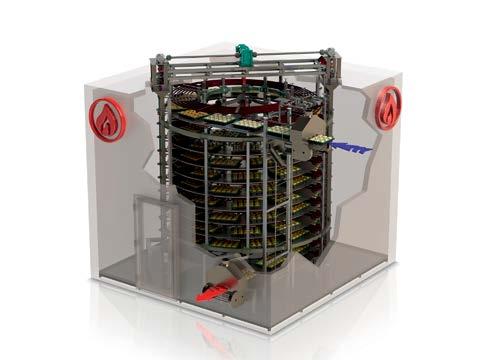

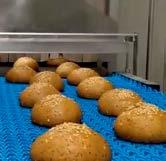

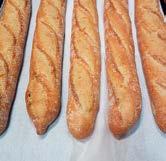
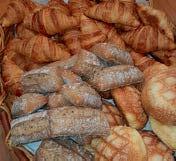




Several European initiatives are aimed at working on the image of bread and stimulating its consumption. The symposium “Bread Promotion Activities in Europe” organized jointly by the AIBI and Fedima in Brussels/Belgium focused on these activities.
+Bre ad consumption in Europe has been in decline for several years. Whereas average annual per capita bread consumption in 17 European countries in 2014 was 67 kg, it was only 63 kg in 2016*. The reasons? Many and various. Negative media reporting (e.g. about gluten) is probably a factor, and (as a consequence of this) skepticism on the part of some consumers who think bread is unhealthy, but also the growing availability of foods that compete with bread, such as mueslis or yoghurts.
There will probably be no magic formula for a reversal. Several European initiatives are aimed at working on the image of bread and stimulating its consumption. The symposium “Bread Promotion Activities in Europe” organized jointly by the AIBI (International Association of Plant Bakers) and Fedima (Federation of European Union Manufacturers and Suppliers of Ingredients to the Bakery, Confectionery and Patisserie Industries) in Brussels/Belgium focused on these activities. The Symposium’s aim was to give participants from the national organizations an overview of the activities and to offer them an opportunity to learn from one another in a reciprocal exchange of views.
In their opening presentations, Fedima President Johan Sanders and AIBI President Joseph Street welcomed around 50 participants from the industry sector to the event. Dr. Fred Brouns, Maastricht University, reported in his contribution that bread was “under fire” nowadays. He said incomplete information was damaging bread’s image and leading to misunderstandings. Prof. Brouns provided scientific knowledge, about wheat among other things, and refuted popular misgivings. A question often asked, for example, is whether modern wheats contain more gluten than older varieties. Based on a study of 150 varieties of wheat, he demonstrated that newer varieties contain less gluten and more starch than


older types. He said that as a result of the study it was also clear that the type and composition of the peptides differ depending on the cereal’s genome. Whether this affects the occurrence and severity of adverse symptoms due to wheat is the subject of a series of international studies. Prof. Brouns referred to the WoW Project (Well on Wheat), which is investigating the health aspects of wheats. Results are published on the web site www.um-eatwell.nl/wow/index.html.

Elodie Clerc from the EU Commission for Agriculture and Rural Development presented the new EU Funding Policy for Agricultural and Processed Agricultural Products – e.g. bread. She said a total of EUR 179 million is available for funding programs in 2018. She gave advice about what must be taken into account when making an application. According to her, the main precondition for funding to be approved is: the message must be European. (You can find more information and examples for co-financed campaigns here: https://ec.europa.eu/chafea/agri/content/info-day-calls-proposals-2018)

One such EU-funded campaign is Bread from Europe, a Belgian-Netherlands project whose participants include the Netherlands Bakery Center (NBC) and the Belgian Institute for Bread & Health. Presenting it, Zsuzsan Proos (NBC) said “If we want to halt the drop in consumption, we must ensure bread remains part of our daily diet. Bread needs a positive boost.” The project required three markets - the Netherlands, Flanders and Wallonia – to be brought under one roof. Therefore it began with a search for values for bread that hold true in all three markets. The campaign’s main message
is: Bread from Europe – a magnificent story. The aim is to communicate how versatile, tasty and nutritious bread is. Bread is convenient and bread is a part of European culture. As a quantitative objective, the aim was to stabilize the market volume in the Netherlands and Belgium at 1.271 million tons by 2020. The plan is to address a broad target group, principally consumers, but also food professionals. Belgium and the Netherlands were each given their own campaign plans. For example, tastings in supermarkets, bakeries or schools were or will be carried out and radio spots produced, as well as TV spots and videos, including with Peter Bienefelt, a well-known Dutch baker, and posted on YouTube. (Link: https://youtu. be/i12NIeG9QcA) The campaign includes other social media and PR campaigns that went public in March 2018. Scientific

Saves even more energy. And is ahead in most other aspects, too. Your next MIWE roll-in e + 3.0.
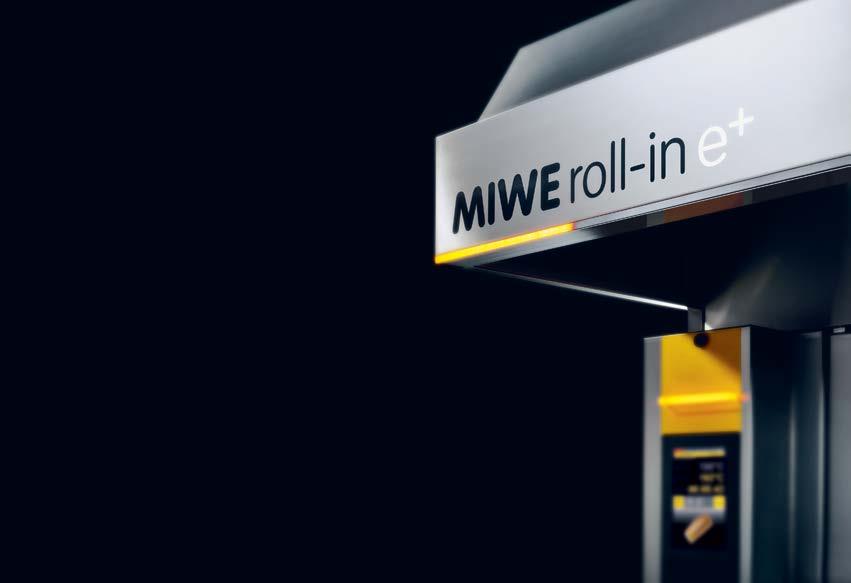
Unique: atmospheric baking. Makes you independent of climatic conditions
Flexible baking characteristics: MIWE delta-baking

Is stingy with energy – from connected load to overall efficiency



Bakes to perfection: core temperature sensor
Ergonomically brilliant: soft close door, remote display, large screen
Stabilize total bread volume in NL and BE at 1.271.065 mln ton in 2020 (Inhome and out-of-home) CAMPAIGN
++ Th e aim of the Bread from Europe campaign is to stabilize the market volume in the Netherlands and Belgium at 1.271 million tons by 2020
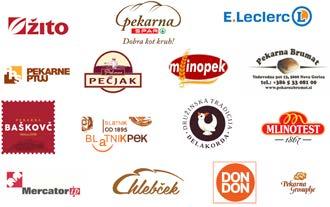
17-4-2018
Bread from Europe – A great story
contributions were produced to address to food professionals, and a round table is scheduled for June 2018. The associated web site is available online in four versions (Dutch, Flemish, Walloon and English at: www.breadfromeurope.eu). The campaign, which is organized for three years until 2020, has an estimated total budget of EUR 6.75 million, 80% of which is contributed by the EU Commission.
The aim of the Bread from Europe campaign is to stabilize the market volume in the Netherlands and Belgium at 1.271 million tons by 2020.
The Belgian Bread and Health Institute* also takes up the subject of bread. As Kathou Wagemans of the FGBB (Federation of Large Bakeries of Belgium) explained, the aim of this initiative, which is addressed to consumers, food professionals and bakers, is to provide objective, scientifically backed information about bread, and to restore bread to its place as part of a healthy diet. Furthermore: its objective is to become THE benchmark in Belgium as far as bread is concerned. But how to reach that objective? Wagemans says: “Talk about bread, talk to scientists about it and encourage others to talk about bread.” She then presented the initiative’s plan of action:
+ Establish an independent “information provider” (i.e. the Institute)
+ Create a network of common interest groups
+ Initiate research: what does the target group know about bread? What are their attitudes?
+ Build a web site
+ Draw attention to the web site, generate traffic through social media, Google or press releases, or produce a newsletter.
+ Examine online activities
+ Organize a crisis communication chain
+ Work on visibility
She says “Building up trust and retaining trustworthiness” is decisive for an initiative of this kind, and it is absolutely essential that it must act independently. She said it is also important to address negative aspects such as the subject of
gluten intolerance. The Institute provides information about cereals, bread varieties, ingredients, health aspects, nutrition and legal matters on its Bread and Health web site (Link: www.broodengezondheid.be) and answers frequently asked questions.
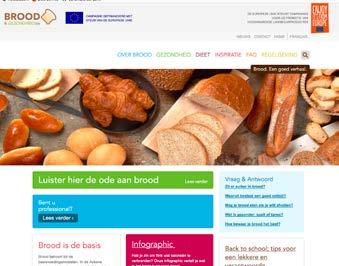

Jana Ramuš from the Slovenian Chamber of Agricultural and Food Enterprises talked about a promotion in Slovenia through a quality label. To obtain the Gold Award, manufacturers submit their bread, baked products, cakes, cookies or pasta to assessment tests. The “test specimens” must fulfil certain quality criteria from the outset, e.g. not contain any trans-fatty acids. The prizes are awarded during a ceremony. Testing continues even after a prize has been awarded. Twice a year, jury members take random samples of prizewinning products from the shelves and re-assess them. If the quality is not correct, the manufacturer is reprimanded. According to Ramuš, the label stimulates a Slovenian baked goods market worth EUR 261 million. “Overall baked goods

COUNT ON A NEW THOMAS L. GREEN PRISM OVEN FROM READING BAKERY SYSTEMS.
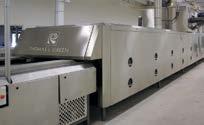


Thomas L. Green Prism Ovens put the latest advances in baking technology to work for you.
• Increase product output with better baking technology.
• Improve product quality using hybrid ovens.


• Reduce energy costs with better insulation, stack heat reclamation, lighter oven belts and recipe driven baking profiles.
• Reduce sanitation time with more oven access doors.
• Replace your oven within a 4 week shut down period.
quality improved. Manufacturers use their Gold Award in their advertising and publicity. The label is well-known and recognized, both by retailers and by consumers.”
Martin Lundell of the Association of Swedish bakers & confectioners supplied much discussion material with his report about a campaign in Sweden which, although rather unusual, is probably also successful for that reason - “Bread the Future or: How can insects be used to sell bread.” It took its starting point from studies showing that 83% of the Swedish population said they liked bread but only 36% think bread is part of a balanced diet, and even fewer, namely 25%, held the opinion that bread is an environmentally friendly product. In his own words, however, the most shocking discovery is that individuals who place value on environmentally friendly products are more likely to buy less bread. Something extraordinary would be needed to counteract this, not least against the background of a tight budget. Lundell says: “To save the planet, according to the media, you would have to begin eating insects. That was the lead we picked up, and we added the advice: ‘Don’t wait for the future. Go for environmentally friendly eating today. Eat bread’.” The campaign started with a 2-minute video posted on social media. The main character is Berit From The Future, a fictional half human half robot character, who shows the audience – while using a long tongue to pick up a grasshopper at the same time – how differently and rather bizarrely people will live in Sweden in the future. The real message comes in a later scene in which she is baking bread: “Only one thing stays like it is. Bread is still environmentally friendly.” As the next initiative in the framework of the campaign, schools were visited and the schoolchildren served sandwiches with insects, while their reactions were filmed and also posted on social media. The young people posted the initiative themselves on their own channels. Other media, e.g. TV broadcasts and newspapers, also took up the subject. Accompanying advertisements were also inserted and notices posted with the message: “Prolong the Earth’s minimum use-by date. Eat Bread.” Lundell reports that 1.7 million people have already seen the Berit video, and the campaign was understood. “Eating bread is good for the climate - 10% of consumers held this opinion before the



Stefan Cappelle, Business Unit Director, Sourdough andGrains at Puratos, and Martina Goernemann closed the series of presentations with their contribution about an emotional bread promotion, about the book “Sourdough – Four days to happiness” to be precise. In this book, author Goernemann documents her travels to meet people in various places all over the world who have stories to tell about bread and about sourdough. The book has been published in English and German, and is available through Prestel UK (Email: sales@ prestel-uk.co.uk).
campaign, and afterwards 41% of the consumers who saw the campaign also took this view.” On top of that, there was another prize for Bread the Future: den ROI Award 2016 for the best Return-on-Investment campaign.
The final part of the symposium was an interactive workshop in which the participants had an opportunity to sit down together with partners in the baked products supply chain and exchange ideas for promotional activities. +++
*The Bread and Health Institute was brought into being in 2014 by three Belgian associations, the Federation of Large Bakeries of Belgium (FGBB), Unifa (Society of Belgian Bakery Raw Materials Producers), the KVBM (Royal Association of Belgium Millers), and Prof. Jan Delcour (Leuven Food Science and Nutrition Research Centre, LFoRCe).




The Heiner Kamps Foundation “Brot gegen Not” (Bread Against Poverty) helps teenagers and young adults who spend their lives on the streets and are refugees or victims of disabilities, war and natural catastrophes. The Foundation provided a multi-deck oven for a training bakery in the Gambia, but it needed a full overhaul. The Heuft group of companies in Bell/ Eifel then carried out all the necessary maintenance and repair work on the oven. The equipment was supplied with a package of spare parts for emergencies, and can now be brought into use in the training bakery in which five young people have been receiving training in the baker’s craft since September 2017. +++
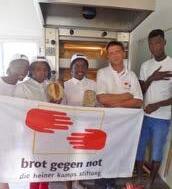
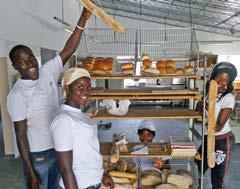

The Cologne trade fair has employed a new business segment manager for the Nutrition and Nutritional Technology competence area in the Trade Fair Management Division. Anne Schumacher (37) takes over responsibility as of July 15, 2018 for the Cologne trade fair’s Anuga, ISM, Eu’Vend & coffeena, vegan department, Anuga FoodTec and ProSweets Cologne, together with the overarching strategy and communications of the “Global Competence in Food and FoodTec” and including the associated foreign trade fairs. Anne Schumacher’s most recent post was with the international trade fair organizer UBM EMEA in Amsterdam. She succeeds Dietmar Eiden, who has managed the area since 2012. +++

Doris Dieplinger will strengthen corporate communications at the international bakery raw materials manufacturer backaldrin. Social media and online agendas place additional requirements on the family-owned company’s communications work. The team headed by Wolfgang Mayer, Executive Board Member, Corporate Communications and Sponsoring, has therefore been expanded. 32-year-old
agronomist Dieplinger already gathered professional experience with the agricultural machinery manufacturer Pöttinger, at the University of Natural Resources and Life Sciences, Vienna, and most recently with the pickled vegetable producer efko Frischfrucht- and Delikatessen GmbH. With her broad specialist knowledge gained from her studies and previous professional work, the Vienna University of Natural Resources graduate will supplement the team led by Doris Strugl and Lena Thalhammer.
Debag Deutsche Backofenbau GmbH is investing in its Bautzen site. New parking spaces for 85 employees are being created in front of the company’s head office. Additional structural modifications have also been carried out inside the company’s building, e.g. the amenities rooms for the production workers have been completely renewed. Managing Director Jost Straube explained that “We closed the 2017 financial year very successfully, and were able to continue our international growth path.” As Debag itself says, it is one of the world’s leading manufacturer of ovens, baking and proofing technology and refrigeration technology. The company currently employs 200 staff and delivers to more than 50 countries worldwide.+++
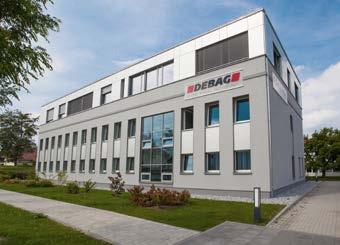
The WP subsidiary Haton opened its new Competence Center in Panningen, the Netherlands, yesterday (June 7, 2018). Managing Director Henk Snellink said:
“We have thought of everything in the new premises, in which transparency is combined with an industrial touch. In addition to the workplaces, which are attractive but also relaxing, there are high-tech conference rooms, an inner courtyard and a multistory office tower. Departments that collaborate directly with customers will be accommodated here: Distribution/ Sales, Service, Project Management and Marketing. That links people together internally and ensures optimum external collaboration.” +++
With 100 years of combined experience, GEA Comas and GEA Imaforni have been engineering high quality solutions for the baking industry. With that kind of history behind us, we have gained world-leading knowledge and expertise to offer you complete production solutions, from dough making to packaging and everything in between, customised to suit the precise requirements of your line of products.
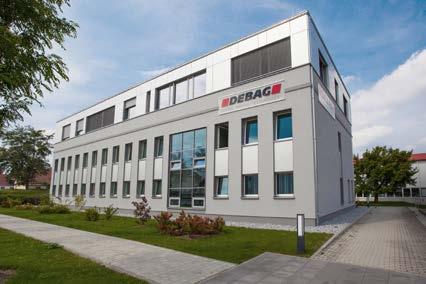
Our range of baking equipment ensures you maximum productivity whilst maintaining the best product quality. With fully automated plants able to run non-stop, we reduce the need for human interaction, thereby reducing the risk of human error and product contamination.
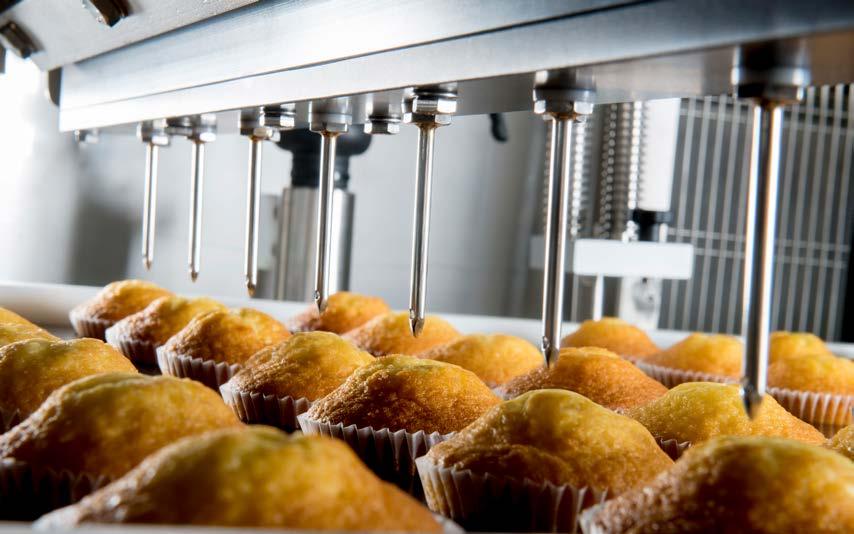
You can also take full advantage of our new Bakery Experience Centre where you’ll be able to test your own products on our equipment, and utilise the knowledge of our specialist food technician to help refine your recipes or make a new product. Experience for yourself the winning combination of our equipment and expertise. After all, the proof is in the pudding. Enquire now at gea.com/bakery
We look forward to meeting you at iba 2018 Hall A6 – booth 211 in Munich, Germany from 15 – 20 September 2018.

WP IB (Werner & Pfleiderer Industrial Bakery Technologies) has developed a new thermo-oil-heated tunnel oven that combines the constant radiant heat typical of thermo-oil with real turbulence, and can also operate without conveyor belts.
+D ieter Knost is, with the greatest respect, an old hand when it comes to developing thermo-oil-heated tunnel ovens, but one particular characteristic has repeatedly troubled him. As a general rule, the heat-carrying thermo-oil flows through closed radiator panels through which air cannot circulate, or at best holes for this can be installed at the transitions between the panels. Real turbulence is something different, and the result of his development work will enter into service in a twin-deck oven in Sweden later this year. It will bake a wide diversity of toast-bread variants with d ifferent product weights in open and closed pan clusters. Due to the twin-deck design, the length of the oven including the inlet and outlet is 39 m, but it delivers 9,000 breads/ hour none theless.
Some of the 12 modules, each 3 m wide and 3 m deep, are still nearing completion in Dinkelsbühl, where they reveal their inner workings to inquisitive eyes. There is an additional steam zone 1.5 m long at the entry point for the pans. Over the two decks, the total baking area of the whole oven is 225 m2. The 3 m module depth is owing to transport in containers, in which the individual segments are stacked lying on their sides. This does not affect the oven’s width, which can currently be chosen between 2.5 and 4 m. According to Knost, even wider ovens are entirely feasible.
Two main factors distinguish the new thermo-oil ovens from their predecessors. Probably the most important change relates to the heat-emitting radiators, and the second is the circulation fans system. Instead of closed radiator panels, Knost and his team have folded a pipe the thickness of a child’s arm in two passes so as to create a surface permeable to air but without causing any gaps in the heat transfer or any pipe radius
narrowing at the turning points. Due to the thermal inertia of the heat exchange medium, the radiant heat remains almost uniform throughout the entire oven, and is at a maximum temperature of 310°C. (As a rule, the temperature in cyclotherm ovens is higher at the start and considerably lower at the end.)
The radiator panels allow air to pass through, and to make certain that the interstices of the pan clusters are also supplied with enough hot air, a circulating fan at each of the two sides of each module ensures sufficient air movement by blowing in and drawing out up to 6,000 m 3/hour of air. In case of doubt, the exact volume depends on the pan cluster and the dough pieces deposited in it. The decisive factor is that convection heat can flow gently around all the pans in the whole
++ This image shows the simulated bread temperatures after a 25-minute baking time, in cross-section at the top, and in the middle again in the arrangement in the oven above the radiators. The temperature scale is in °Kelvin

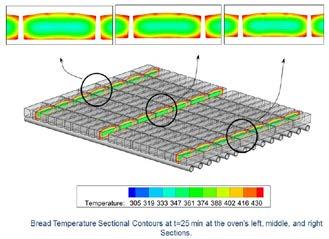
++ The first segments of the new two-deck tunnel oven shortly before completion. The big openings for the circulating fans on both sides are clearly visible
++ A view into the oven’s baking chambers through which a wire mesh belt, steel plates or stone plates can all run equally well, and it is even possible to convey pan clusters on chains

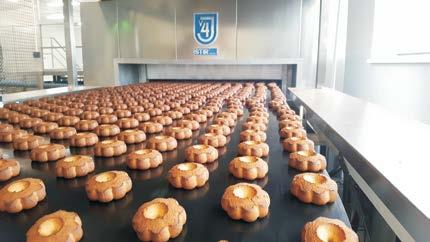

++ Th e oven’s heating registers consist of a single piece of interwoven pipes





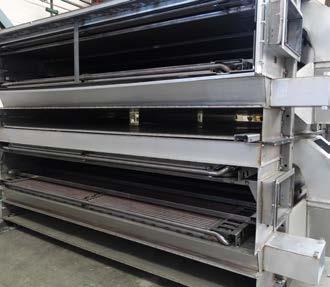
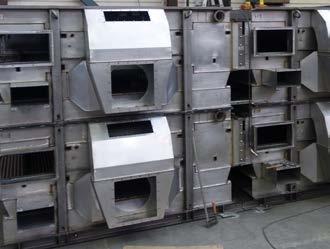
oven. The fans draw preheated air from the distributor duct, i.e. the space below the belt or pan transport system. WP IB conducted a research project with Erlangen University to determine where the baked goods reach which core temperature as they are transported through the oven, where and for how long they need radiant heat, and when switching on the turbulences improves the baking result. According to Knost: “We can establish a uniform flow pattern over the area, but we can also generate quite individual heat transfer profiles.”
The oven, which will go to Sweden, consists of twelve modules, each with two baking levels. More decks are feasible, and so are wider modules. The novel design offers not only a combination of radiation and real convection heat, but also an unusually high degree of flexibility in terms of how the doughs are conveyed through the oven. Anyone who wants

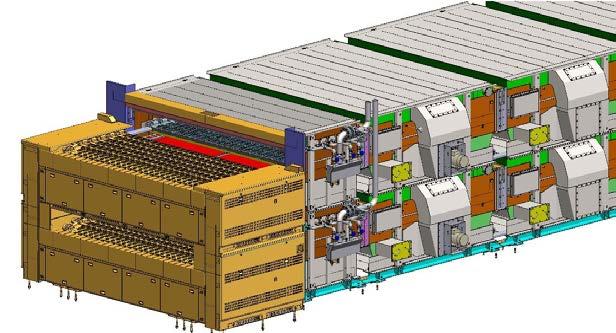
to use the combination can employ all kinds of wire mesh belts, or can have the pan clusters pulled through the baking zone almost free-floating on chains.
These chains can also be fitted with plates, either metal or stone plates. In that case, however, one must do without part of the convection, and the air flow over the baked goods is then only from above. A central steam generator can supply steam for the steaming zone. A new system whose functioning is similar to that of an instantaneous water heater is being installed in Sweden.
There is a whole series of additional details on this oven that are worth reporting. We have marked the procedure “for resubmission”, and hope we will be able to provide you with a report about the ongoing operation in the fall.

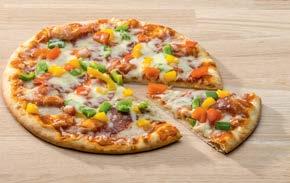

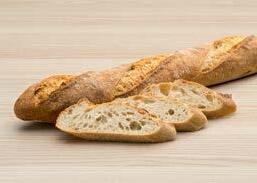


A selfie, baby photos, logos, marriage proposals or other messages – photo-cakes with a chosen theme for the chosen date – these are the core business of InterNestor GmbH, which describes itself as Europe’s market leader in this segment.
+D r. August Oetker KG holds a 49% minority stake in InterNestor, which was founded by Alexander Weinzetl and Swedish-born Henrik Svensson in 2006. Speaking after Oetker entered in February 2018, Dr. Albert Christmann (Management Board Chairman of Dr. August Oetker Nahrungsmittel KG and Oetker Digital GmbH) said: “This shareholding is an optimum supplement to our existing digital cake portfolioe.g. oetker.de, backen.de and kuchenfreude.de – and advances our expansion strategy in this segment of the future.”
According to its own statement, InterNestor is the European market leader for individualizable photo-cakes. Several thousand cakes are produced every month; sales revenues in the 2017 financial year were in the low single-digit millions range.
A centerpiece of the business model are the cake printers. They use food colorings to print chosen messages on marzipan or fondant frosting that has been rolled out flat and with which the cake is enrobed. The impression of a three-dimensional image motif is created by wrapping the marzipan and/or fondant frosting around the sides of the cake.
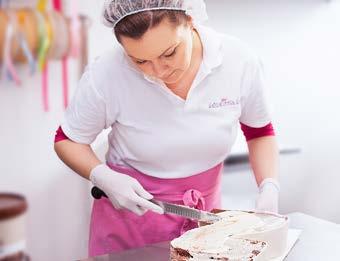
The ordering process is simple and runs online. The customer chooses the cake –the style variant and the size (from small, EUR 31.90 EUR, to large, EUR 79.90), uploads the photo and places the order. The company operates online shops in five countries. “deineTorte.de”
for the German market began in 2009, and was followed by France (votreGateau.fr), Sweden (dinTårta.se), the Netherlands (jeEigenTaart.nl) and Poland (twojTort.pl). The Kölnische Rundschau (Cologne Review, a newspaper) reports that the product range on offer is the same everywhere, and irrespective of where, by whom and in which language the order is placed, it always arrives at the headquarters in Cologne (Germany). InterNestor employs 60 staff, 40 of them in the production department.
Cakes with a printed photo are only a part of the business, which also includes cakes shaped like a handbag or with a “gateau princess”, Darth Vader, an apology or erotic gateaux, as well as macaroons, cake pops or brownies. +++


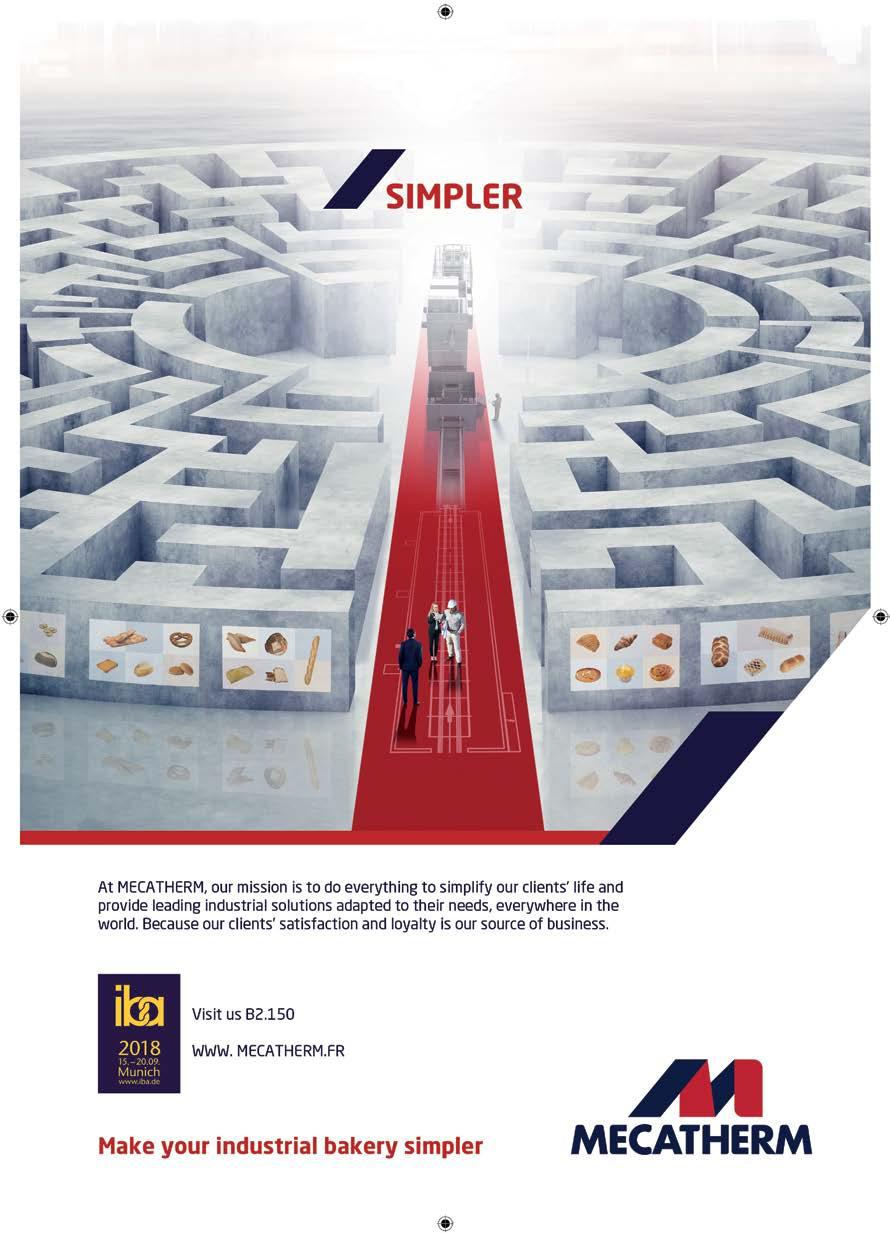

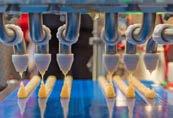
In 2018, the international baking industry will be dominated by iba. The world's leading trade fair for bakery, confectionery and snacks will take place at Fairground Munich from 15 – 20 September 2018.



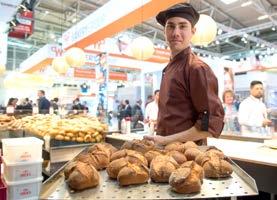
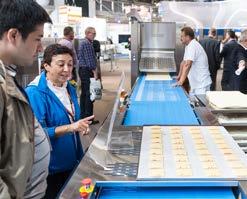

As a premier platform, iba offers an unparalleled market overview in twelve halls with all the latest innovations and products of the industry. "The interest shown by national and international companies is huge. Apart from a few remaining spaces, iba is already fully booked," says Dieter Dohr, CEO and President of GHM Gesellschaft für Handwerksmessen mbH. More than 1300 exhibitors from over 50 countries (dated June 2018) will cover the entire spectrum of
baking goods with their range. "As the leading trade fair, iba has an eye on all the trends in the industry worldwide, as well as the relevant requirements for bakers and confectioners, restaurateurs and industry decision-makers of the food retailing sector," explains Dohr. "At iba 2018, innovations and concepts will play a central role for all sized companies in the areas of manufacturing processes, the out-of-house market, energy efficiency, automation, hygiene, digitisation

at the point of sale, and in production, shop fitting, packaging and logistics."

New iba speaker’s corner in hall A1
New legal regulations, the changing eating habits of consumers and the use of digital solutions or the demand for sustainable packaging: The baking industry is facing big challenges. In addition to the iba.FORUM in Hall B3, the new iba speaker’s corner in Hall A1 offers comprehensive orientation. There, visitors can exchange ideas with leading experts on
The first oven cleaning system to use a 500-day refill cycle.


Your staff don’t need to worry about a thing. The DEBAG service technician will take care of the logistics, refilling and disposal of the cleaning agent. Once filled, the supply of cleaning agent lasts for 500 days.* The right dosage is calculated and the programme starts automatically – meaning that no further operator action is required.
interesting topics from science to applying it in practice and get a prospect on upcoming trends.

Visitor service: The digital iba marketplace
iba also offers its visitors a new digital service. Through the online marketplace, visitors can prepare themselves better for their specific needs before the fair and have a better overview and thus orientation on site. Thanks to the new search option for "solution approaches", you can quickly find, for example, innovative snack solutions, digitisation, energy efficiency or
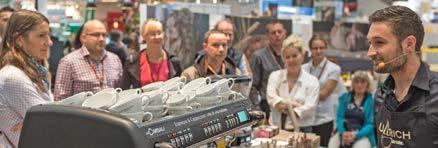
raw materials that will be exhibited at iba. Additionally, visitors have the opportunity to contact the exhibitors directly and arrange appointments with them. Further information is available at www.marktplatz.iba.de/en.
Also new is the topic area "iba.TO GO!" in Hall B3. For the first time, iba is combining innovations and solutions for snack
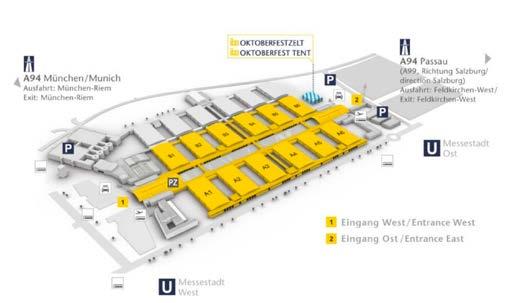
Travel by plane
From the Munich Airport you can easily reach the Fairground Munich by public transportation or taxi services. For the complete flight schedule please visit www.munich-airport.de/en.
Trave l by public transport
Public transportation is a quick and easy way from the airport to the fairground. The train station for the S1 and S8 municipal trains is located directly under the Central Area of the Munich Airport. Trains depart for downtown Munich every 10 minutes.
Tra nsfer by taxi
A sufficient number of taxis are available directly in front of the terminals. The one-way trip takes approximately 35 minutes, depending on traffic. Munich International Trade Fairs and the Munich taxi-owners' association have agreed to a fixed rate of 63,00 EUR (status as of 2017) regardless of the time of year. This offer applies only to the most direct route between the airport and the trade-fair centre in kilometers.
Trav el by airport shuttle bus
The airport shuttle bus is a convenient way to get from the airport to iba and back. The shuttle runs every 20 minutes. Arrival point at the fairground is the East Entrance.
Overview of the area
and beverage concepts for baking traders at a central contact point. There, the entire process chain of snacks is presented –from ingredients and preparation, through to sustainable packaging solutions to logistics and shop design, rounded off with many workshops and displays. The trend topic coffee is also discussed in detail by experts, starting with the coffee bean, roasting and grinding, to machines and serving coffee in china or to-go cups with a deposit system. +++
Ticket prices: One way ticket: 9,00 EUR; Return ticket: 15,00 EUR Arrival and departure points at iba: Arriving: East Entrance; Departure: East + West Entrance
Trave l by car
The fairground of Messe München is located directly on the A94 motorway with two direct exits available. A dynamic traffic-guidance system regulates the flow of traffic, guides fair-going vehicles and directs trade fair visitors to the nearest available parking at the fairground.
Driving to the fairground with a navigation System
To get to the fairground, the destination address to enter into your navigation system is "An der Point". Depending on which navigation system you use, the fairground is listed under the categories "Exhibition Centre", "Trade Fair Centre" and under the German keyword "Messe".
Travel by train and public transport
Munich is very easy to reach by train from all German cities as well as from a number of European metropolises. MVV tickets for any means of public transport can be obtained: From ticket machines at S- and U-Bahn stops, in trams and busses (single and day tickets only). At ticket offices (kiosks etc.) and in regional buses. Please note: All tickets must be validated in a blue ticketcancelling machine before you start your trip.




CAKES & MUFFINS

WAFFLES & FUNCAKES
PASTRY




PIZZAS,

SHEETED BREADS PIES



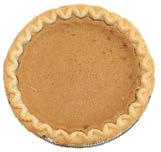
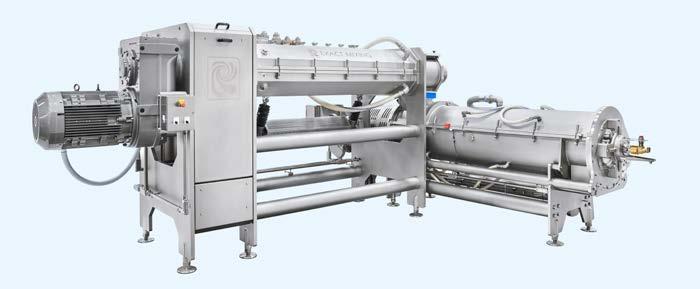
Reading Bakery Systems, a member of the Markel Food Group, has re-engineered the MX Continuous Mixer. The model now ranks as the most versatile continuous mixer, and is suitable for a broad product spectrum and a wide diversity of doughs.
The re-engineered mixing and kneading system is destined for the Tromp Group’s new Technology Center in the Netherlands. Tromp is also a member of the Markel Food Group. A short interview with Joe Pocevicius, European Sales Manager of the Tromp Group, about collaboration and the re-engineered mixer.
+ bbi: From when and where exactly can customers in Europe see and test the MX Continuous Mixer?
+ Pocevicius: The MX Mixer with Hydrobond Technology will be displayed at iba 2018 in the RBS booth- Hall B1.234. The Mixer will then be installed at the Tromp Group Innovation Center in Gorinchem, The Netherlands.
+ bbi: Is the intention to further deepen collaboration within the Markel Food Group, and what are your objectives?
+ Pocevicius: We are putting this Exact Mixing system in the Tromp Group Innovation Center for a few reasons. We would like to introduce our innovative continuous mixing technology to European customers and more easily partner with them to validate their products and demonstrate our capabilities. We also want to exhibit our partnership with Tromp Group and the ability to deliver turnkey systems from a one source supplier to their customers for products such as pastries, pizza, cakes, pies, flatbread, funcakes and more. Continuous Mixing can compliment the products and processes that Tromp Group offers, so it is a perfect match. This also allows us the ability to hold seminars in collaboration with Tromp Group to help our customers stay on the cutting edge of mixing and baking technology.
+ bbi: Regarding the Exact Mixing MX Continuous Mixer, what exactly was renewed and/or re-engineered?
+ Pocevicius: The MX Mixer is our most flexible mixer because the shafts can be reconfigured to make a wide variety of products including cookies, snacks, batters, icings, and pastes. It has been recently redesigned to produce higher dough production rates, be more sanitary and easier to clean. We have also developed a high speed developer which, when used with the MX Mixers, allows us to make highly developed doughs such as buns and English muffins.
+ bbi: Can you give a more precisely detailed explanation of Hydrobond technology, and which advantages does the system contain?
+ Pocevicius: Hydrobond Technology™ delivers instant, even hydration of a dry ingredient stream (typically flour) before it enters the continuous mixer. This uniform hydration is accomplished without adding heat to the dough, and results in shorter mixing time, with less energy required. Hydrobond Technology mixes dough on a particle-to-particle basis. It is based on the principle that mixing smaller amounts of liquid and dry ingredients together at one time is easier and more efficient. Normally the hydration step is done inside the mixer, but that takes longer and the hydration isn’t as uniform. With Hydrobond Technology, a continuous mixer can produce significantly more dough using the same size mixer. When used with a continuous mixer, Hydrobond Technology speeds up the continuous process allowing for the use of a shorter mixer, which means a smaller footprint, lower equipment costs, and lower energy costs.
+ bbi: How many kilograms/hour of dough can be manufactured by using the mixer?
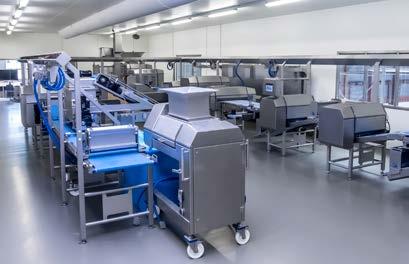
+ Pocevicius: The MX Mixer is now available in larger models expanding throughput to 8000 kg/hr in a single unit. When combined with the high speed developer for breads and buns, the throughput is 7000 kg/hr.
+ bbi: The wall and shaft cooling are said to have been re-engineered. Can you please explain what improvements now exist compared to other models?
+ Pocevicius: We have maximized contact between cooled surfaces and the dough to improve cooling efficiency. This is accomplished with the shaft design and mixing action.
+ bbi: And now a question appropriate to the trade fair: what kinds of innovations will readers be able to see on the Markel Food Group’s stand at the iba trade fair in Munich?

+ Pocevicius: The RBS booth (B1.234) will display a new Exact Mixing HDX continuous mixing system for buns (MX mixer with high speed developer) on the show floor. RBS will also feature a new Thomas L. Green Servo Wirecut Machine, new Emithermic cookie oven and Reading Thermal bread and bun oven profiling solutions. RBS will also be giving away a new SCORPION ® Food Safety System at iba 2018 to one show attendee!
Tromp Group booth (B1-340) will present “All about Pizza”, Integrated Pizza Solutions for the uninterrupted production of quality products. The concept is as simple as it is efficient, with modularly-designed equipment that offers complete or stand-alone equipment. The booth will display a part of a Multibake ® HT oven. This is a directly heated oven with a stone floor for perfect pizza baking production.
The AMF Bakery Systems booth will feature a can’t-miss, immersive demonstration of our equipment-at-work through Augmented Reality. New equipment innovations will showcase AMF’s investment in sanitary re-design for core equipment solutions. The AMFConnect ™ solution, engineered for smart, connected bakeries, will allow visitors to discover how digital transformation of your bakery can improve visibility, and minimize downtime while synchronizing your entire production line. Visitors will learn first-hand how to build higher performing teams through AMFMethod ™ , AMF’s cutting-edge training technology.
+ bbi: Thank you for the interview. +++
Around the world, more food is proofed, baked, cooked, cooled and frozen on our conveyor belts. Ask
The GEA technology group has developed OxyCheck, a non-invasive oxygen measurement system for MAP packages*. It allows contactless testing of each individual pack for leak-tightness and oxygen content.
+Packing under protective gas involves introducing a mixture of carbon dioxide and nitrogen gases into packages before sealing them. Naturally, a small proportion of oxygen remains in the package, and this must not exceed a limit value. GEA OxyCheck monitors residual oxygen con tent directly in the thermoforming machine during the production operation.
GEA’s technology works by using a sensor spot consisting of a polystyrene-based fluorescent dye printed onto the inner surface of the film. Similar to an indicator strip, the dye’s wavelength changes depending on the oxygen content in the package. Sensors in the thermoformer excite this sensor spot and read it. For this, the company developed a special method to convert light emission as a function of temperature into oxygen concentration. The measuring system does not affect either line speed or the thermoformer’s throughput.
In the past, the oxygen content in MAP packs was measured on a random sampling basis – according to GEA, as a rule this was done on fewer than 0.5% of the packages produced. These were removed from ongoing production and examined by a probe. If the package did not satisfy the specification, the line was stopped and the entire production back to the last monitoring operation was destroyed. However, this required even faultless packs to be disposed of, because the needles destroyed them during testing. In contrast, firstly the OxyCheck operates in a contactless way, neither product nor material being wasted, and secondly all products in the production run are checked.
GEA OxyCheck has been approved by the U.S. Food and Drug Administration (U.S. FDA) and meets all relevant EU regulations for Food Contact Materials (FCMs). The liquid is similar to the materials used in making the packaging films. The sensors work with the pulsed light of an LED, which is safe for both products and operators. The process has no effect on either the composition of the modified atmosphere or the package content. Initially designed for use on the horizontal thermoformers of the PowerPak line, GEA OxyCheck will also be available as an optional feature or retro-fit upgrade for other equipment with MAP capabilities. In the future, GEA is planning to offer the system for other applications such as the vertical thermoformer as well.
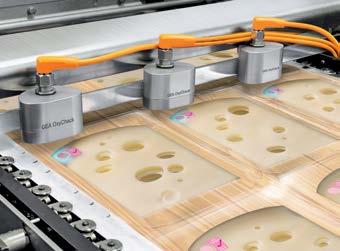

*MAP: Modified Atmosphere Packaging
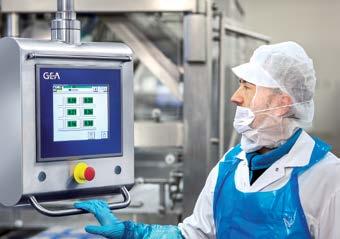
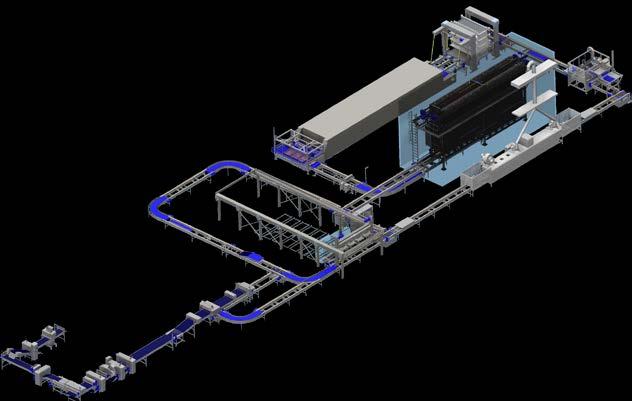

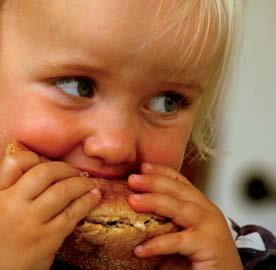
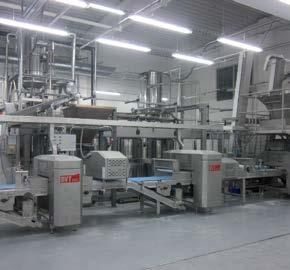







Pre-baked bread can be stored unwrapped at 3°C for six days or more without losing moisture –that’s how Johann Trenker in Toblach in the Puster Valley ensures maximum flexibility and freshness freshness.


++ One schüttelbrot (South Tyrolean flatbread) is not the same as another schüttelbrot – every baker in South Tyrol has his own recipe, and Johann Trenker has half a dozen. There’s rye-flavored handmade schüttelbrot, spelt schüttelbrot, machine-made wheat schüttelbrot, schüttelbrot with seeds and mini-schüttelbrot as a baked snack. Incidentally, schüttelbrot (English: shaken bread) is called schüttelbrot because the proofed dough is shaken on a wooden board until the large input of energy makes it spread out flat – due to its TA (dough yield) of more than 180
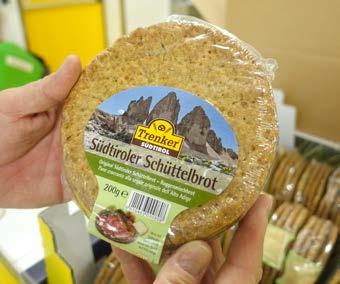
A lthough the Puster Valley is rather sparsely populated, thousands of tourists come to the high Alpine region around the famous “Drei Zinnen” (Three Peaks) mountain range in summer and for the winter skiing season. These extreme demand fluctuations don’t make things easy for a baker like Johann Trenker, and entail recalibrating a complex production and distribution system on a daily basis.
Trenker generates two thirds of his sales through his nine branches in the Italian part of the Puster Valley and two in the Austrian part, together with six locations in Bozen 100 km further away. In addition he supplies local caterers and
private wholesalers, who mainly distribute his rye-flavored South Tyrolean specialties down the Italian peninsula as far as Rome.
The specialty product range comprising various dry products such as schüttelbrot, lye grissini, pretzel sticks, stuzzini, pretzels etc. is an important factor to balance out the fluctuating day-to-day business, and these are offered for sale in all the local distribution channels as well as in the international food retail. Only the total is what makes up a production portfolio which, although very varied, when added together creates a coherent product portfolio that fully occupies
thirteen bakers working two shifts in the production unit. When packing, dispatch, administration and branches are included, Trenker employs a total of more than 70 staff.
His range of fresh products concentrates on bread and rolls, many of them South Tyrolean specialties with a healthy proportion of rye or spelt. Even the bread twists have a dough color distinctly darker than is usual elsewhere. Whereas bread rolls are processed directly or run through a proofing interrupter in a long-time dough method, Trenker has used a new approach since November last year. An approach that takes the breads through a Hein Flexbaker, mostly weighing 500 grams and up to 70% part-baked. They are then fully baked-off in the production unit shortly before delivery.
++



breads popular as snacks to nibble, and are a part of Trenker’s range of long-life baked products just as much as pretzel sticks, pretzels and schüttelbrot, which can be used to smooth out demand fluctuations in the fresh goods business

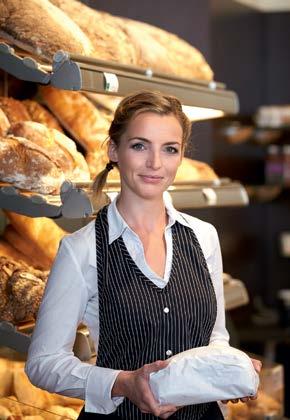

The Flexbaker is a modified cooling cell in which there is a consistent temperature of 3°C and a relative air humidity of 95%. Air in the cell is constantly circulated at a comparatively low velocity and passes over UV light sources in the cover area, which stops the growth of germs and mold spores. Newly-developed control software regulates the temperature, air humidity and air speed. Hygrometers measure the air humidity, and the controller feeds in additional moisture through pressure plates at the sidewall if necessary, regulated via a sliding element depending on the cell’s loading. The program has provision for 200 different levels of air speed.
Viktoria Binder’s bachelor thesis at the Upper Austria University of Applied Sciences in Wels last summer dealt in detail with the “Physical Characterization of HB (half-baked) baked products during storage in a modified cooling cell” – i.e. in a Flexbaker. The paper was written in collaboration with master bakers from the backaldrin company, Asten. To assess the effect, Mrs. Binder analyzed the water content, weight and texture of half-baked bread rolls, and four different types of bread, both during their respective storage and also after the second baking process. Tests were carried out on halfbaked rolls, a country style wheat bread, a wheat mixed bread 70/30, a rye mixed bread 70/30 and a PurPur (purple wheat) wholegrain bread. Whereas clear losses of water
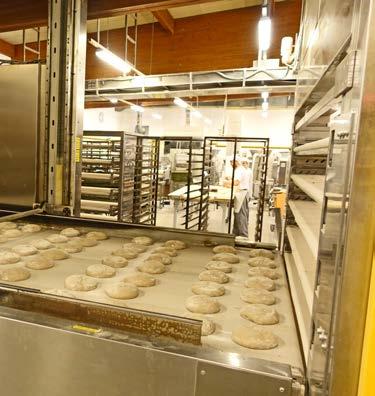
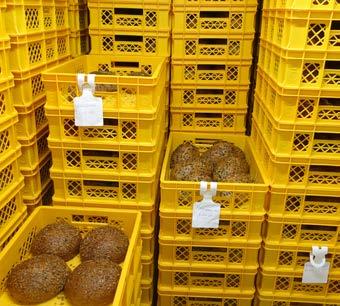
occurred and the crumb firmness increased with other storage methods such as room storage or cold storage under a rack hood, Mrs. Binder discovered that: “With HB (half-baked) baked products, no water loss during storage was determined. On the contrary, a weight increase during storage was observed. Only very slight losses of water were discovered after the second baking process, so only a very small water loss was noticed. Consequently this also resulted in a softer, more moist crumb, which was also reflected in the sensory description.” According to her observation, HB baked products can be stored under these conditions for around seven to 14 days without spoilage occurring or any significant weight loss. The crumb remains elastic and soft, and there is even a further improvement in flavor. Test persons even attested to Flexbaker rolls having a better flavor compared to fresh Kaiser rolls. The energy requirement is also said to be reduced by up to 40% compared to a dough storage freezer. According to Binder, dough pieces can also be stored in the Flexbaker for two to three days without any preservation.

However, the extended storage period is less important to Johann Trenker. He achieves flavor through slow dough management, sourdough and hot-soaked grain. He is mainly interested in the great flexibility offered to him by the new system, and the opportunity it allows him to move away from refrigerating the bread. He stores bread in the Flexbaker for an average of four to six days. The yellow baskets used exclusively for internal goods transport have a closed base and open sides. This minimizes the uncontrolled scattering of strewings that have fallen off. Each basket can hold six 500 g breads. The Flexbaker holds 450 baskets. This is enough to enable a very fast response to sales fluctuations and even demand peaks occurring at very short notice.

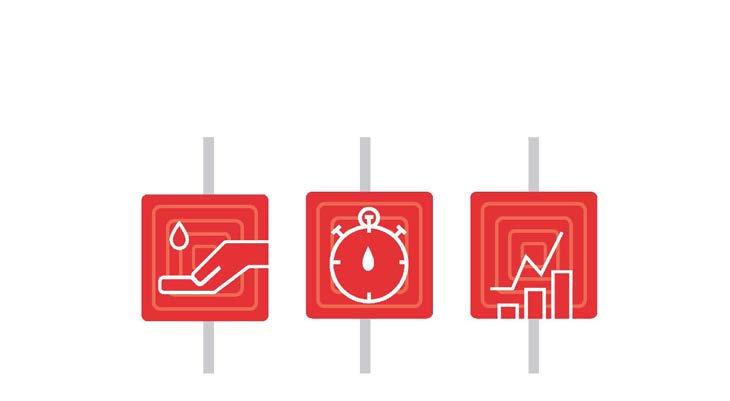
AMF Bakery Systems’ Spiral Conveyor incorporates the most sanitary design elements, including a patent-pending monopiece cage bar, for efficient cleaning and maintenance. Equipped with plastic modular belting using the Intralox DirectDrive™ System, the Spiral Conveyor eliminates product movement on the belt to minimize potential jams. This custom-configured solution is suitable for a variety of product applications including intermediate dough proofing, product proofing, cooling, and freezing.

Your bakery is our world.
VISIT AMF BAKERY SYSTEMS AT: MODERN BAKERY, MOSCOW FOOD & HOTEL ASIA, SINGAPORE BAKERY
Combination ovens that unite at least two heat transfer systems are on the market, even specifically for the baking sector. We have tracked down a few professional appliances.
+Relevant specialist suppliers started offering the Miele Dialog Oven to ambitious hobby cooks two months ago. The press announced the oven with headlines such as “It talks to the roast” (Süddeutsche Zeitung) or “Miele has the oven of the future” (chip.de) and similar superlatives. The appliance, which looks like an oven, sends electromagnetic waves at frequencies of the kind usual in mobile phone networks into the food, where they initiate the cooking process by generating heat. However, the highlight are sensors in the oven that give constant feedback about how much energy the food has already absorbed, and adjust the frequency of the radiation to suit the cooking process.
This dialogue-loving oven cooks food without browning it or, as Miele puts it, “in depth”. For example, bread can be baked without any crust. For all those who don’t want to miss the aromas of roasted steak or baking bread, Miele combines the Dialog Oven with conventional operating modes. However, Miele’s child prodigy costs around EUR 8,000 and is only intended for hobby chefs, and according to its press office, there are no plans for a professional variant for bakeries and caterers.
Although instore oven builders are not (yet) opting for this Miele technology, they certainly do offer innovations aimed increasingly at the snack business. Of course, combination ovens that unite at least two heat transfer systems for various purposes are on the market, even specifically for the baking sector. We have tracked down a few professional appliances.
The MIWE gusto:snack from MIWE Michael Wenz GmbH, Arnstein/Germany, is a convection baking oven with additional functions (including a steam-cooking function) for the snack business. If the user employs the Quick Serve function, the oven operates with combined heat transfer by convection and top heat with radiant heat from below (griddle). According to the company, this is good for grilling or gratinating snacks. The power distribution setting can be varied. For example: 40% of the power is to be used for top heat and the rest for circulating air (this second value is then calculated automatically). A specific distribution for the Quick Serve Function is already stored (standard setting), but this can be adapted for a specific product. The total power is 3.4 kW.
The company’s latest hybrid oven, the MIWE gusto:flash, combines microwave with impingement technology. It can be used to heat ready-made snacks quickly without causing them to lose their crispness (crisp on the outside, hot inside). The oven is designed for a fast heat boost at the point of sale, both for snacks and for tomato/mozzarella-topped baguettes, meatloaf rolls or burgers. The microwaves are
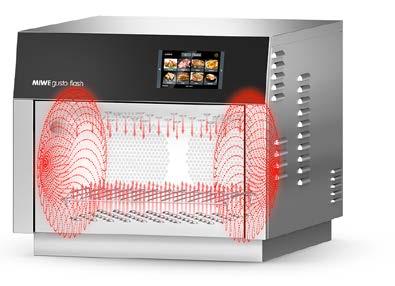
generated by magnetrons located at the right and left sides of the oven. According to MIWE, more uniform distribution and thus faster heating is achieved because the energy acts on the product from both sides. Microwave power is adjustable between 0 and 100%. Impingement technology, with which heat acts on the product even more specifically compared to convection, creates powerfully accelerated air flows up to 26 m/s from above and below. It ensures crisp surfaces. Both the air speed and microwave power are adjustable between 0 and 100%. The total oven power is 5.4 kW.

*Height/width/depth


The TurboChef company, owned by the Middleby Corporation since 2008 and headquartered in Carrollton, Texas/ USA, has operated in the “fast cooking” region of the market since 1991, mainly in the catering area. It offers the sota, Panini, i3 and i5 oven variants. They operate with circulating air and microwaves, while the bullet model has an additional heating element used for radiant heat. Depending on the version and model, these ovens achieve powers from 6.2 to 9.5 kW. They are available in all the usual RAL colors, with a 230 or 400 Volt power supply and in three size variants.

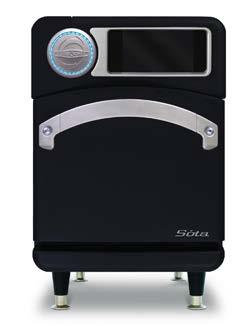
Wiesheu, Grossbottwar/Germany, has now also entered the world of high-speed ovens through its new cooperation partner Atollspeed. The ovens combine microwave technology, which heats the product’s interior quickly and specifically, with impingement/hot-air technology, that uses accelerated hot air (up to 9 m/s) to ensure snacks are
Follow us on our digital channels.


WHERE THE ELEMENTS ARE IN HARMONY WITH YOUR BREAD.
fully baked crisp on the outside in seconds. The “Speed Ovens” are available in two sizes: the 300H variant with a 317 x 311 mm baking area and the 400H with a 450 x 350 mm baking area. Their power ratings are 3.3 kW (Atollspeed 300H) and 4.9 kW (Atollspeed 400H) respectively.
According to its manufacturer Welbilt, New Port Richey, Florida/USA, the Merrychef eikon e2s operates with microwaves, impingement and hot air technology. It cooks, toasts, grills, bakes and heats fresh and frozen snacks. The fast-cook system in the standard version operates at a power of 1,000 Watts for microwave use and 2,200 Watts for hot air. When combined, the two heat transfer systems need 1,000 + 1,300 Watts (microwave/ hot air). The high-power model needs 2,000 Watts for the microwave function and 2,200 Watts for preparation using hot air. In
combination, the two systems use 2,000 + 2,200 Watts (microwave/hot air). The eikon e2s variant has a footprint 60 cm deep and 35.6 cm wide, and a cooking space 31.1 cm wide.

Instore oven builders also frequently offer combinations of oven types that use different heat transfer systems and are then arranged above or alongside one another. The majority involve combinations of circulating air – for the whole range of baked products –and a (stone) deck – mostly for pizza.
Examples include the DILA-HELIOS from DEBAG Deutsche Backofenbau, the Torero convection oven, which WP also offers in combination with 1 or 2 baking compartments of the MD Store 6.4, or the Dibas 64 blue combined with the Wiesheu Ebo multideck oven. +++
July 17-19, 2018
Tokyo/Japan
7th Bakery & Cafe Japan 2018 ww.bakery-expo.com/2018/en
July 24-27, 2018
São Paulo/Brazil
FIPAN
http://fipan.com.br/?lang=en
September 5-8, 2018
Riga/Latvia
Riga Food 2018
www.bt1.lv/bt1/rigafood/?link=10000000
September 15-20, 2018
Munich/Germany
iba 2018 www.iba.de/en
October 14-16, 2018
Riyadh/Kingdom Of Saudi Arabia
SIBPE 2018
www.sibpe.com
O ctober 14-17, 2018
Chicago/USA
Pack Expo Chicago
www.tradefairdates.com/PackExpo-M1809/Chicago.html

October 21-25, 2018
Paris/France
SIAL Paris www.sialparis.com
November 6-8, 2018
Dubai/UAE
Gulfood Manufacturing 2018 www.gulfood.com
NOV
January 27-30, 2019
Cologne/Germany
ProSweets Cologne
www.prosweets-cologne.de
February 23-26, 2019
Madrid/Spain
INTERSICOP 2019
www.intersicop.ifema.es
September, 7-11, 2019
Las Vegas/USA
IBIE – International Baking Industry Exposition www.ibie2019.com

Stefan Soiné, Managing Director of IREKS GmbH in Kulmbach, celebrated his 60th birthday on June 1. Soiné joined IREKS GmbH in 1992, received power of attorney in 1993, took over the technical management of baking ingredients production in Germany as Deputy Managing Director in 1995 and then progressively assumed technical responsibility in the international company group. He has been a company Executive Director since August 1995. In addition to the technical area and internal functions, he is also responsible for the company group’s worldwide malt business and for the baking ingredients business in Germany and Austria. He is also involved in an honorary capacity in various committees and federations in the baking and brewing industry. +++
The Biscuit international group, founded in 2016 and majorityowned by the French private equity group Qualium, produces 100,000 tons of cookies and wafers. It was formed by the merger of the French cookie manufacturer Poult and the Dutch wafer specialist Banketgroep. Banketgroep in turn came into being in 2007 through fusion of Bakkersland’s confectionery division (the bread bakeries were in the process of merging into the Borgesius and Goedhart family holding) and the Van der Breggen wafer and cookie bakery. The Group operates six bakeries in the Netherlands and five in France. The CEO is Ron Priem, who started his career with Friesland Campina and worked at Goodyear-Dunlop via Kimberly-Clark, Mars, Campbell’s and VK. The Group has now taken over Northumbrian Fine Foods in Great Britain, who make gluten-free cookies and snacks. Their turnover in 2017 was GBP 27 million.
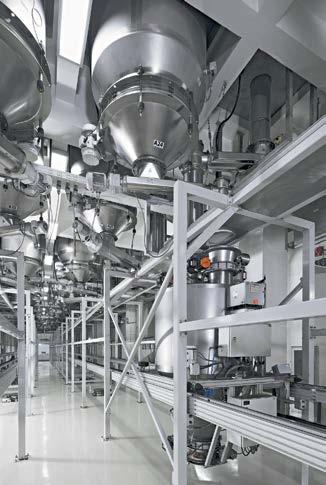
According to its own announcement, the Private Equity Group IK Investment Partners has expressed an interest in taking over the French frozen dessert and confectionery producer Mademoiselle Desserts. Mademoiselle operates manufacturing sites in France and the Netherlands, and took over the frozen food producer Ministry of Cake in the UK in early 2017. This means there are a total of nine production facilities (we reported about the production site in Thenon in Perigord in baking+biscuits international, Issue 1/2018). In its own press release, IK says it has begun discussions with the previous owners of Mademoiselle, namely Equistone Partners, Céréa Partenaire, Azulis Capital and the management team with a view to taking over the majority of the capital. According to the private equity fund’s press release, Mademoiselle Dessert had impressed the fund managers with its development in the past few years and they wanted, together with the management team, to ensure further growth via acquisitions and product development. +++
+With its I 410 model MULTIVAC Marking & Inspection offers an automatic inspection solution. Thanks to its high-resolution and height-adjustable line scanners as well as its image processing, it ensures that reliable marking and quality inspection from above and below is achieved. The space-saving inspection system can be used as a stand-alone solution at the end of a packaging machine or it can be integrated seamlessly into a line.
The areas of use for the I 410 range from completeness checks on the packs, through to presence and position inspection of the labels, and right up to checking the print – and this includes pattern and character recognition, character verification and inspection of legibility and codes. The image-capturing technology enables images in high resolution to be transmitted and verified even at the highest speeds within the packaging procedure.
The I 410 is designed for use in the food industry, and it is equipped with a separate transport conveyor. The packs can either be fed in manually or transferred from an upstream
transport unit. Since a motorised ejection device ensures that reject packs are ejected consistently, compressed air is not required to operate the inspection system.
The system is operated via the MULTIVAC HMI 2.0. Where the unit is installed in a packaging line, it is controlled centrally via the control terminal of the packaging machine, and all processes can be controlled intuitively on the 12 inch LCD touchscreen. MULTIVAC Line Control ensures that efficient line integration is achieved, and it enables product changes to be carried out very quickly since the setting parameters for the particular product are saved in the recipe. The inspection results are also transferred to the line-motion control of the MULTIVAC machine, so that packs detected as rejects can be tracked and then reliably ejected from the line.

“Thanks to its modular construction, the system offers users a high level of flexibility as regards the use of different ejection options or visual inspection modules such as cameras, barcode readers or sensors,” says Stefan Korf, Product Manager for Inspection Systems at MULTIVAC. +++
Multivac celebrated the opening of new production facility in Bulgaria. The new manufacturing plant of Multivac Bulgaria Production Ltd is located in the industrial area of Bozhurishte, near Sofia and has a total surface area of around 20,000 square metres. In addition to a factory building with the latest technology for the production of Multivac parts, the complex also includes a state-of-the-art warehouse and logistics centre, a training centre and an administration building. In addition to the Bulgarian sales and service company headed by Trifon Filipov, an international Shared Service Centre for IT, Strategic Purchasing, Design and Service will also be housed in the new building. The groundbreaking ceremony for the new production facility was celebrated in September 2016. A total of 18.8 million euros were invested. +++

In-depth knowledge of dough technology is a key ingredient required for the production of high-quality bakery products. With over 35 years of experience in the bakery industry, Rademaker is expert in this field. This knowhow, combined with specific sheeting process expertise, overall production process insights and cost of ownership calculations, are used to develop the very best bakery equipment solutions that will work for you.


This résumé rather hits the nail on the head as a description of the Bubner Bakery’s USP: traditional artisanal but with state-of-the-art technology, not over-frilly but always good for surprises. One example of its unusual products is gherkin bread.
+G herkin bread is a hearth-baked wheat mixed bread (89% wheat, 11% rye) with pickled gherkins (10%) and potato flakes. It has a light, moist crumb with a savory but not excessive gherkin flavor and a discreet hint of dill. The bread has been on the UNESCO intangible cultural heritage list since 2015.
Bubner’s produces it from Mondays to Sundays. “It’s not a common product, not even in the region,” says company boss Thomas Bubner. “As far as I know, we are the only ones in the market who manufacture it.” The idea of using gherkins is also proverbially obvious, particularly as the Spreewald area, the biggest gherkin-growing region in the Federal Republic of Germany, is just under 40 km from the parent headquarters in Doberlug-Kirchhain, from where the suggestion originated. As Thomas Bubner recalls: “We didn’t invent it, the idea of working with the topic was from a customer. A restauranteur came to us and asked whether we could develop a small bread with pickled gherkins as a souvenir product for tourists.”
Gherkin bread is moving towards being an A-product in the Spreewald branches nowadays, especially in summer. The 250 g product virtually fits into a handbag and costs EUR 1.70.

The bread has now also teamed up with a burger. Stephan Täubert, a top chef by profession and the member of the company responsible for developing products in the snack and catering area, has invested many hours of work in this project and says: “Gherkin bread as a Burger takes our bread competence into the snack area.” The result is the Lusatian Luther Burger, so called because it was created to commemorate the 500th anniversary of the Reformation (the Year of Luther, 2017), and combines a burger’s regional with its international touch. It consists essentially of a gherkin bread bun, a meat
Proprietor: Thomas Bubner
Production area: approx. 2,150 m 2
Employees: approx. 240
Branches: 19
Sales breakdown:
bread/rolls/organic: 42%, pastries: 23%, confectionery: 11%, snacks/lunchtime: 15%, hot drinks: 9%
ADVERTISEMENT



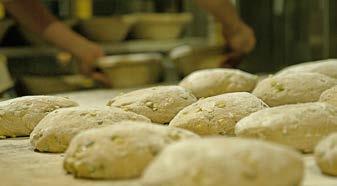


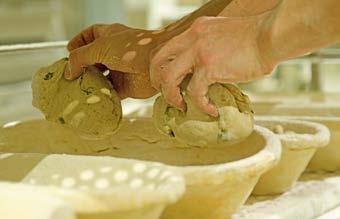
patty or in the vegetarian option a kidney bean patty, an avocado crème especially created by Stephan Täubert, and tomatoes, gouda cheese, onions and salad. Nothing comes out of a bag.
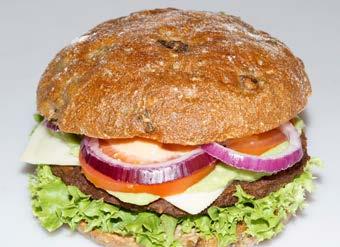
Apropos burgers, Täubert says: “We intentionally carry only a limited range. If the subject of burgers is pushed too far, customers expect many variants to be on offer. But that’s not the way we do things. We are a bakery, not a burger restaurant, and for us a burger with bread competence is only one variant of a baked snack.”
Gherkin bread and burger buns are based on the same dough, the only difference being that the dough for buns is prepared with a slightly firmer consistency. The dough is fully kneaded out before adding the dill and (drained) gherkin cubes, after which the dough is kneaded for a further two minutes. Finally the dough is pre-portioned via weigh scales. The bread and buns (100 g) are then round-molded by hand.
The Bubner Bakery’s core competence is in classical rye mixed breads, wholegrain products, bread rolls and traditional yeast tray cakes, but also in snacks. Stephan Täubert stresses that “Traditionally, we are very competent with snacks. We go to great lengths and have many of our own creations. At the same time, we endeavor not only to have regional roots but also to obtain our materials regionally.” After a successful test phase, a new addition to the product range is another regional savory bread variety: the Spreewald baguette; a country-style leavened spelt-rye baguette with sauerkraut and diced ham. A willingness to experiment, that’s the main ingredient. According to Eva Kallinich, the company’s staff member responsible for marketing: “Because we are in the open countryside here, we want to and must constantly offer our customers something new. It can be a snack with chili sauce or avocado, or licorice can be contrasted with cream. We are open to innovations, but it must remain in the artisan tradition.”
The Bubner Bakery, together with the Sonnewalde agricultural cooperative, has grown its own rye locally close to the bakery for the past three years. Bubner uses the original variety called Conduct. The 2017 harvest yielded 270 tons of rye, a quantity that covers the company’s own requirement.
Company boss Thomas Bubner has a good instinct for the market and for the special challenges that arise when a bakery operates in a rather sparsely-populated region. “First and foremost, we must find an answer to the demographic development in rural areas. It has impacts on our customer structure, on the number of customers and on the size of the towns in which our branches are located. To make up for that, we made an early start on work to establish ourselves on a broad basis. To gain footfall in the branches, we built up a large range of snack offerings many years ago, and last year we invested in our own production kitchen. We have a high proportion of catering, and our classical lunchtime menu has a cult following. This concept has enabled us to grow.”
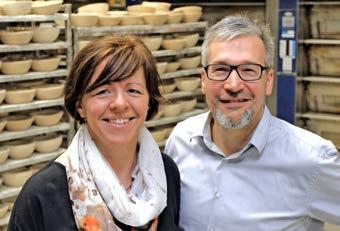

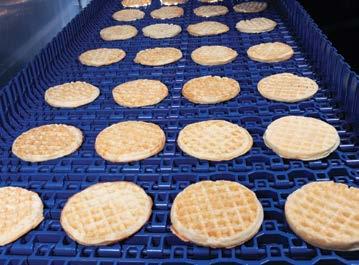
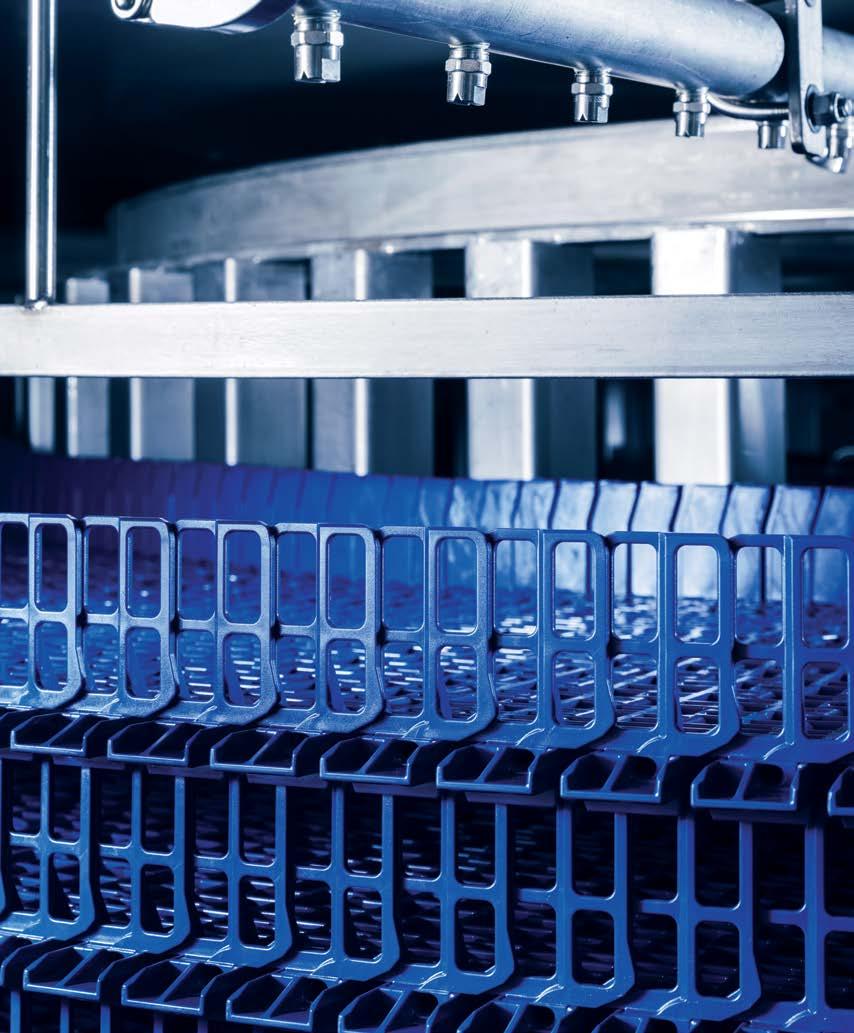
DirectDrive System spirals function the way spiral systems should function; with reduced belt tension, with improved product orientation, with increased load capability. This system eliminates overdrive and makes operation of your mission critical equipment reliably smooth, without interruption.
Technology like this isn’t a luxury. It’s a necessity.
Improved efficiency
Reliable performance
Reduced total cost of ownership

SASA, owned by the Sasa Demarle Group, is formulating and manufacturing its own silicone coating. With the iNFiNiUM ® 6001, the comany introduces its next generation of silicone-based non-stick coating for the baking industry.
+“ We have listened to the demands of our key customers. We have worked very hard in creating the iNFiNiUM ® 6001 formula from an ambitious test plan of 94 created formula” declares Thomas Mernici, the head chemical engineer of the Sasa Demarle Group. The challenge was then to produce it industrially and the company has in vested massively into a new high-end chemical reactor to achieve stable and large-scale production
As a result, whereas the previous formula could easily withstand 3,500 baking cycles, the iNFiNiUM ® 6001 can exceed 5,000 baking cycles. Similarly, the maximum operating temperature of the existing silicone was 240°C which is now extended to 260°C with the new formula.
Artisan-like bread on standard industrial lines?
Beyond the compelling need to improve the operating costs of the bread production lines, the end-users are demanding more genuine products. The demand is now to create a visually appealing product with high-quality taste and better shelf life. For crusty bread such as a baguette, this means that the industrial product must mimic the artisan bread: a nice
golden crust, a savoury crumb and a higher water content make a clear differentiation over the typical industrial white baguette.
Jean-Louis Berthomier who leads the engineering and R&D department of SASA reckons that “it is possible to reach industrially a quality that comes very close to the artisan work on baguettes by developing the baking trays adapted to the parameters of the process line and the bread recipe”. However, Jean-Louis also admits that they have not found a single design of baking tray that fits all purposes. They must define very precisely the shape of baking tray, the various perforations (size and layout) on all areas of the tray (bottom, side & top of the channels, tray frame) and, last but not least, the non-stick coating type. +++
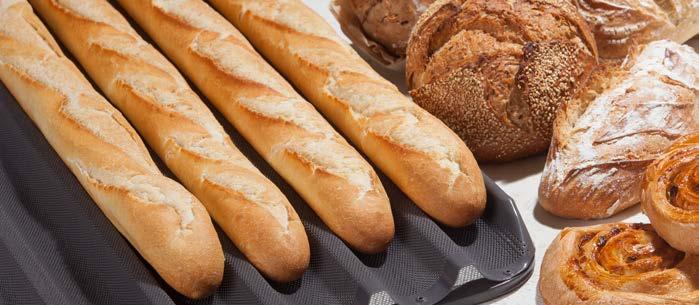
“We first try to understand the bread-making process and recipe, which we then turn into a technical solution for baking and proofing trays”
Rudy Boussemart, President of Sasa-Demarle Group

Being able to measure and control the many variables of the baking process –temperature, airflow, heat flux and humidity – is the difference between inconsistent product and product that comes off the line the same all day, every day.
The SCORPION® 2 with SMART SENSOR TECHNOLOGYTM is a complete data logging measurement system setting new standards in measuring and analyzing in-process conditions. Key parameters are accurately measured by connecting Smart Sensors to the data logger and passing the equipment through a process with the product. The profiles are then easily downloaded to a PC for analysis with the proprietary SCORPION® Software - giving you the critical information you need to correct problems and maintain optimum process conditions.
For details, e-mail us at info@readingthermal.com or call 610-678-5890 ext. 2.
Vienna’s baked goods gourmets have a new place of pilgrimage. It is located – nomen est omen (it’s all in the name) – in Bäckergasse (Baker Street) 10 and is owned by Rémi Soulier and Patricia Petschenig.

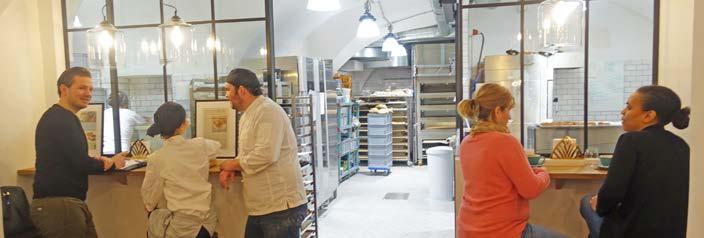
+S oulier, or so it is said, is a child from a well-to-do Austro-French family that also owns the property in downtown Vienna. The Francophile Viennese pair have flown the French bakery and patisserie’s flag here since October last year.

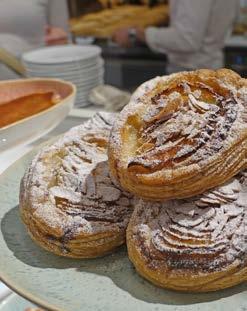
After their Matura exam (A-Level), Rémi Soulier and Patricia Petschenig made their way to Paris for an in-depth study of the high art of baking and patisserie, including at the Ferrandi Culinary School there. Back on the Danube, they have been putting what they learned into practice since October 2017, and within a few weeks have become an insider tip known throughout the town.
The flours for baguettes and breads come from small French mills that also include the wheatgerm in the milling. The latter’s fat content and flavors enrich the taste of the breads, but also spoil quickly, which is why they demand care and control from bakers. The doughs are made up quite traditionally by hand, and after baking they go directly into the shops. Artisan work also applies to booking and sheeting (laminating) the puff pastry and croissant doughs – using French butter, of course. Windows around the corner provide a view into the bakery. Incidentally, products are freshly baked on demand, even in the late afternoon. The shop closes at 19:00 hrs. on Tuesdays to Fridays, at 18:00 hrs. on Saturday and at 14:00 hrs. on Sunday, and is closed all day Monday. Two bakers and a
++ These apple tartlets show the careful work with which even supposedly simple products are made here. Their taste is simply fantastic, and at EUR 3.90 they are even economically priced compared to the other patisserie products
confectioner currently work in the bakery in addition to the two proprietors. The guestroom accommodates around 30 seats, which are well filled regardless of whether it’s at breakfast time, at lunchtime when the emphasis is on filled baguettes and fougasses, or in the afternoon/early evening. The sales and service staff have a good workload, and demand is attracted especially by the fine patisserie works of art created lovingly by hand and with a great flair for decoration. On the other hand, the first bites are followed by enjoyment-filled silence.
++ Tasteful in every detail: In the inner courtyard leading to the bathroom there is a 2CV – the “duck” that was once a symbol of French cultural life for half of Europe

++ The bread shelf is still modestly filled in the morning. In the foreground: filled fougasses and baguettes with goat’s cheese, tomatoes and honey sauce, or salami and any amount of little gherkins

++ A couple of slices of brioche with butter and fine preserve cost EUR 3.80, a café au lait to accompany them is EUR 4.10, a croissant EUR 2.50 and a fine almond cookie (tuiles aux amandes) is EUR 0.70

Zeppelin Systems GmbH
Messenhäuser Straße 37-45
63322 Rödermark, Germany
Tel. +49 6074 691 - 0
foodtechnology@zeppelin.com
www.zeppelin-systems.com
Plant engineering redesigned: We offer you the choice rather than ready-made kits – because we integrate processes, not just parts –for more efficiency, flexibility and security. Innovative plant designs from the plant architects. For a perfect dough all along the line.

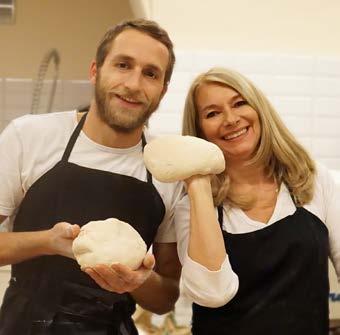
One might think it’s just another of those bakery workshops where stressed “nerds” can chill out by “doing something very practical with their own hands for once”. But there’s more to it.
+More precisely, two people are behind it, namely Barbara Van Melle (58), a journalist well-known throughout Austria, author of the book “The Aroma of Fresh Bread”, entrepreneur and Director of Vienna Slow Food, and Simon Wöckl (28), master baker with numerous awards, currently an Agronomy student and freelance bakery consultant. While preparing Slow Food recommendations about travel to selected food producers with whom one can also attend courses, the pair assisted bakers in Kärnten, among other places, to join together to form a consortium “to uphold the art of good bread baking and to place knowledge about ancient recipes, traditions and artisan craft in the forefront of their passionate love for the art of baking bread”.
Van Melle and Wöckl are rather like the double-headed spider in a network of relationships devoted to propaganda for good bread. Their target group are young and old consumers, bakers, suppliers and all those who have anything whatever to do with nutrition. As long as good artisan bread is involved, they have no fear of contact with bakers both large and small, nor with sponsors and above all not with the press, because they have a masterly understanding of how to integrate both of them. The means by which they prove this include the “Bread Festival”, which took place for the third time this year and attracted 10,000 visitors last year. Around 30 professional bakers were present there in March, among them two from Piedmont and one from Bratislava, bringing with him the famous “Pressburger Kipfel” (Pressburg croissant). It is said that the best bread in the country was to be found on that day in baking competitions for professional and hobby cooks. (see also our blog post at http://backweltblog.com)
Demonstration bakeries show visitors how to mix, knead, mold & bake, while swap deals with cultures can be transacted at the sourdough exchange. The latest project by the two bread enthusiasts is the First Vienna Bread-baking Studio in Heumühlgasse in Vienna’s Fourth District where, with help from sponsors, the pair are currently preparing rooms in which renowned bakers such as Dietmar Kappl, Franz Brandl, Georg Öfferl and of course Simon Wöckl, together with master patissier Pierre Reboul will hold public baking courses. It’s a challenge for the professionals, because the baking will be done in domestic ovens.
Important though the baking courses are to finance the breadbaking studio, the fact that knowledge and experience are being widely spread is equally important to the two instigators. Events from June onwards will include regular workshops for children in which they will learn everything from growing cereals to the finished bread, and which are designed to give them practical experience of what is needed to produce good
bread. These courses are being sponsored by a Viennese baker. According to Barbara Van Melle: “Of course it will not turn all the children into bread enthusiasts, but we can only strive and hope to carry them with us.” She calls it marketing with content.
Van Melle and Wöckl hope their campaigns will act as an initial spark, and that bakers will open up their bakeries to consumers so the latter can become familiar with the artisan craft again. It’s an auspicious time for this, since increasing numbers of bakers and career-changers are rediscovering traditional processes and methods, and are having second thoughts about the origins of their raw materials. For all of these people, the pair are planning a platform on which small mills will offer their specialist flours to the baking community – regardless of whether they are professionals or hobby bakers. Wöckl says: “Up to now there has been scarcely any awareness of the differences between flours, especially in combination with the soils on which the cereal grows. This in particular yields so many opportunities, in addition to which we can rescue a proportion of the diversity of varieties at the same time.”
The next project is a YouTube channel via which, through professionally-made videos, the pair can also transmit their knowledge to all those who have no opportunity for a personal visit to the bread-baking studio in Vienna. Because one thing is crystal clear to the two propagandists: “Our biggest problem is ‘stultification of the population’, and the only weapon with which to fight that is knowledge transfer.” +++





The Ströck Bakery is one of the big four in Vienna’s baked goods market. The succession is arranged and responding flexibly and innovatively to customer’s wishes is the name of the strategy – and its success shows the family is right. An interview with Managing Director Gerhard Ströck .
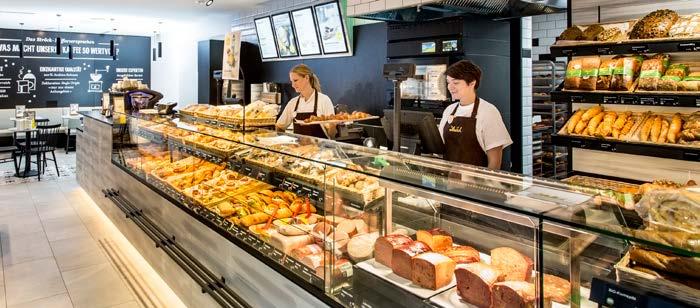
+bbi: Mr. Ströck, there are now only a few manufacturing bakeries still located in Vienna, in addition to which there are numerous companies in the surrounding regions that operate branches here and/or supply into this area. In your view, how many specialist bakery businesses are there altogether in Vienna, and how do you see the future trend? Is the market oversupplied?
+ Ströck: I estimate that there are around 500 purely specialist bakery businesses in Vienna. They are enough to saturate the market – with a few exceptions such as newly-built residential districts. There are no longer any good branch locations in the city still remaining unoccupied. However, one must add to this the fact that a pure bakery business will not be the only way for baked products manufacturers to bring their goods to consumers in future.
+ bbi: Traditionally, the Austrian food retail has been a nonnegligible sales channel for baked goods, and its importance is increasing. How important is the food retail to Vienna’s bakery market, and in which product range is its competition most noticeable?
+ Ströck: If you combine together the entire food retail including discounters, then this group is certainly Vienna’s “biggest baker” in volume terms. The food retail has made big gains in the past few years, especially in the bread market.
+ bbi: The four biggest chain stores in Vienna currently add up to more than 300 branches. Ströck’s succession is already arranged and in office. What would happen to the market if
one of the other three was available for purchase, or simply vanished from the market?
+ Ströck: Although none of us likes to think it, everyone is replaceable. That may sound brutal, but it is a fact. The city would not be undersupplied for an instant. Production capacities inside and outside the city are big enough.
+ bbi: In Austria, and in Vienna as well, there is a series of “new” bakers who draw attention to themselves. They use selected raw materials, artisan work, traditional methods and impeccable marketing to give their baked products a gourmet image, and also end up with corresponding prices. What do such bakers mean to Ströck – competition, support, incentive?
+ Ströck: Personally, I regard this trend as very positive. Of course it’s competition, but it’s incentive as well. However, there’s also another aspect that I find equally important. With these colleagues, the price of a kilo of bread is between EUR 7 and 10. That makes consumers aware of the value of bread, which benefits us all. As far as we in Ströck are concerned, we ourselves are among the trend-setting suppliers in this market segment with our “Feierabend” (Closing Time) brand. When I look in the other direction, I see there are already 80 staff employed in the Feierabend bread segment in our departments for production, marketing, sales etc. It’s one of our growth markets.
+ bbi: The bread range is associated with the “Feierabend” bakery-restaurant which is owned by your family and is
aimed along similar gourmet lines. It is not offered in all of Ströck’s branches. Are you testing the subdivision of the business by market segments under different names?
+ Ströck: Precisely! Yesterday’s success recipes are no good for tomorrow’s business of selling baked products. The restaurant is the connecting link. Bread plays an important role in the foods it offers, which in turn gives identity and authenticity to the product range.
+ bbi: Consumers are changing their consumption behavior. The out-of-house market is booming, and the delivery service growth rates are even steeper, albeit still on a smaller basis. Has the classical bakery business had its day, and/or must businesses come to terms with the need to achieve their sales via quite different channels in the future, e.g. branches that serve quick purchasing on the go, depots in convenience shops, in delicatessen outlets, organic food suppliers, wine merchants and off-licenses or the delivery service?
+ Ströck: I don’t have a crystal ball, so I can’t foretell which channels will be successful and which will not. However, I am convinced we will need to demonstrate the greatest possible flexibility in the future to meet customers wherever or however they want to buy and/or consume. Expecting customers to come into our shops sooner or later will not suffice. Despite all this flexibility, we must keep an eye on long-term economic efficiency, because that’s the only thing that provides the basis for this flexibility.
+ bbi: Is my impression deceiving me, or is Ströck the Viennese baker who has the most locations in or at local public transport stations? Of the total of 74, how many are your branches, and how large is the proportion of catering in them?
+ Ströck: We have nearly 20 branches at such stations, and of course the proportion of catering there is – shall we say –very good.
+ bbi: How many purchasers at such locations are what could be called regular customers? Can one build up any kind of customer loyalty there?
+ Ströck: The question cannot be answered meaningfully without market research on the spot. According to my judgement and experience, however, many people use the opportunity to shop on their daily journey to work. Loyalty to the products and their quality, and also of course to the staff on the spot as well as to the company, arises naturally in that way. But I don’t have any exact figures.
+ bbi: In 2017, the food retail markedly increased its efforts to penetrate the out-of-house business. Product ranges were expanded, and price differences compared to bakers became very clear. Do you already notice that, and how do you plan to win the competition?
+ Ströck: The Ströck Bakery has a long tradition as a supplier to the food retail. Until 1991 we were present in the market with just a single branch of our own. We have grown very successfully together with the retail. What was and is decisive, however, is that we have constantly asked ourselves the question “are we still on the right track?”. I am confident that my grandson Maximilian, who is just four years old today, will still bake successfully under the “Ströck” name if he chooses to pursue that career. There’s always a market for quality – in whatever way each business defines the word “quality” for itself and its employees.
+ bbi: Five years ago, you opened “Feierabend”, an up-market restaurant with its own vegetable growers and a menu on which bread plays a dominant role. What has Ströck gained from it –image or experience – and why have you not yet turned it into a chain?
+ Ströck: “Feierabend” gave us a new, fresh, youthful image. This acceptance by young people is clear, e.g. through
From mixing to packaging – this process chain needs to be efficient and totally hygienic. Siegling Belting has an extensive product range to do just that.
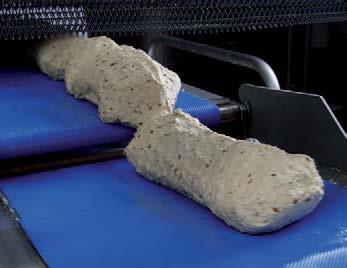
■ Innovative belt types for all steps in the process and functions required
■ Easy-to-clean HACCP belts with excellent release characteristics, as well as superb resistance to hydrolysis, oil and grease

■ With reliable 24-hour service and in uncompromising quality
Forbo Siegling
>> Visit us at hall B6, booth 400
Facebook. Ströck has around 22,000 friends and Feierabend around 33,000, and none of these friends was bought in, which is also said to occur. We are gaining acceptance and recognition, while at the same time it is clear to everyone that Feierabend and Ströck belong together – although we are not a big corporation – contrary to the repeated slanderous allegations the Austrian trade unions like to make. As far as future development is concerned, we still have a few outstanding homework tasks to complete before we move forward. Ultimately it involves offering customers the highest possible quality every day, and doing that each day is a very intensive job.
+ bbi: The fact that the raw materials used and the goods offered originate from the country itself is a popular advertising approach in Austria. Is the artisan trade a trendsetter in that respect, or are you driven by the retail?
+ Ströck: Ströck has been and remains a pioneer for the Austrian baked goods sector in this area, and that traces back to the dedication on the part of my wife Gabriele. She introduced us to the principle more than 20 years ago, inter alia in connection with our activity as a supplier of the organic brand “Ja! Natürlich” (Yes! Naturally). We were also pioneers with Fairtrade coffee in Austria, just as in other regions. Looking back, I must say that these decisions brought great success to Ströck.
+ bbi: The first of the retail groups are now propagandizing the battle against excessive amounts of sugar in foods, and are filling public debate with this topic. What does that mean for bakers, and how do you respond to it?

+ Ströck: It’s a very specific subject that has already preoccupied me for a very long time. On the one hand, according to our ideas of quality, all previous attempts to bake using stevia or other sugar substitutes have failed. On the other hand, illnesses such as diabetes are a scourge of mankind worldwide. Therefore it is clear that we must all join together to pay attention to a balanced diet, and we as bakers must bear
a share of the responsibility for this. I cannot yet give you any detailed information at the present time as to exactly how we as Ströck will approach the subject.
+ bbi: Using pure artisan work to distinguish oneself from industry is no problem, but what are the unrivalled characteristics on which a chain store operator of your size can base its unique selling proposition?
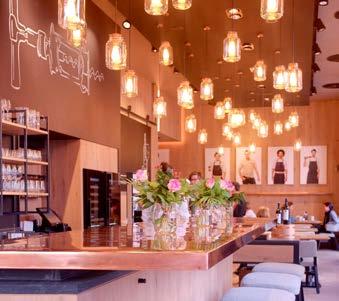
+ Ströck: It’s teamwork across the entire value-added chain from purchasing and production to sales, the Hygiene Officer, the cleaning lady, and everyone who is involved in it. They must all understand what the customer needs, what he or she pays good money for, and how we succeed in giving the customer the best service every day. Perhaps that sounds simple, but its daily implementation involves a colossal task, not least for me as a Managing Director who motivates the employees to place the customer and his or her needs center stage.
+ bbi: We talked about the fact that the succession in your company is arranged. In retrospect, what has been your biggest challenge, and what do you see lying in wait for your sons in the future?
+ Ströck: I believe there’s no comparison. The times were and are different. For example, I discussed my decisions regarding the company with my mother over and over again for 25 years, which was often completely unnecessary. Our three sons have, so to speak, grown up in the bakery. They have experienced their parents’ basic attitude to the company and to their work, but without ever feeling any compulsion to take over the bakery some day. Our sons were and are able to do or not do whatever they feel is right and proper in the interests of customers. That’s what makes us what we are today as a family and as a family business. At the age of nearly 60, I have a very relaxed view of the Ströck Bakery’s future. I am confident that all shall be well, and all manner of thing shall be well in that respect.
+ bbi: Mr. Ströck, many thanks for the interview. +++

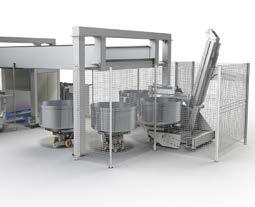
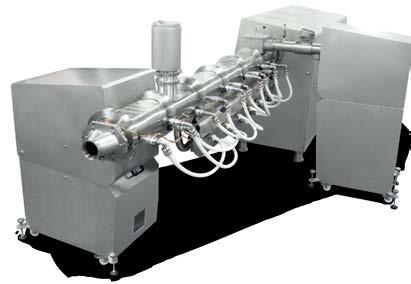

A company of

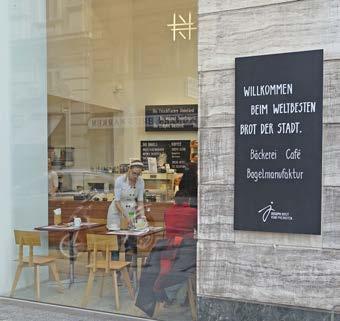

++ During our visit to the “Bagel Factory”, traditional Joseph breads and fine pastries were sold over the counter more often than bagels

Josef Weghaupt has never yet lacked self-confidence, which is why JOSEPH BROT VOM PHFEINSTEN describes his bagels simply “as the world’s best bagels”. At least that’s his opinion. There’s also a new free-of-charge “genesis story” of the dough ring now present worldwide. According to this history, the bagel originates neither from Eastern Europe’s Jewish past nor from the cellars of New York or Montreal, but – how could it be otherwise with Joseph –from Vienna, where it is said to have been created during the Turkish siege. However, perhaps that’s just a secret but also a highly topical political statement.
Be that as it may, at least Josef and his assistants drop the dough into boiling water before it is baked, which is already half the battle for an authentic beigele or bagel. A fitting location for this is supplied by Vienna’s city center, directly opposite the Albertina Museum, one of the biggest temples of art in the Danube metropolis.
The bagel is here in organic quality and three versions, made from wild rye, with Viennese sourdough or with malted grain. Anyone who wants topping on it can ask for it. However, a bagel with roast beef or salmon will set you back more than EUR 10. What else was noticeable in the branch named the “Bagel Factory” and opened especially for bagels? Turmeric latte and the organic-pumpkin-speculation-cream-cheese muffin, of course. +++



































All sizes great and small.
FRITSCH IMPRESSA bread – great-tasting, natural products with an artisanal look are no problem. Proven SoftProcessing technology guarantees exceptionally gentle processing of soft dough and allows high output and absolutely stable operation. For production of round-molded rolls – in all sizes from small rolls to large boules – the round molder for artisanal bread opens up virtually unlimited possibilities, so you can realize your great ideas.
See the IMPRESSA bread live at the iba 2018. Find out more at www.fritsch-group.com























































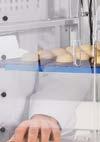


























































We look forward to welcoming you






Austria’s retail is arming itself for an attack on one of the baking industry’s vulnerable flanks –out-of-house business. Baked products and hot drinks are the principal focal points.
+A cup of espresso lungo, cappuccino, big brown or mélange costs only EUR 1.50 in Spar’s Enjoy convenience store in Wollzeile in the city center. There’s a choice between a small coffee for EUR 1.50 and a large one for EUR 2 in the Billa market in Perfektastrasse.
Whereas Spar’s convenience shop in the expensive city center tries to bring together the largest possible range and selection in a small space, thus giving a slightly crowded kiosk-like feel, Billa in the 23rd district’s industrial estate has, in its own words,


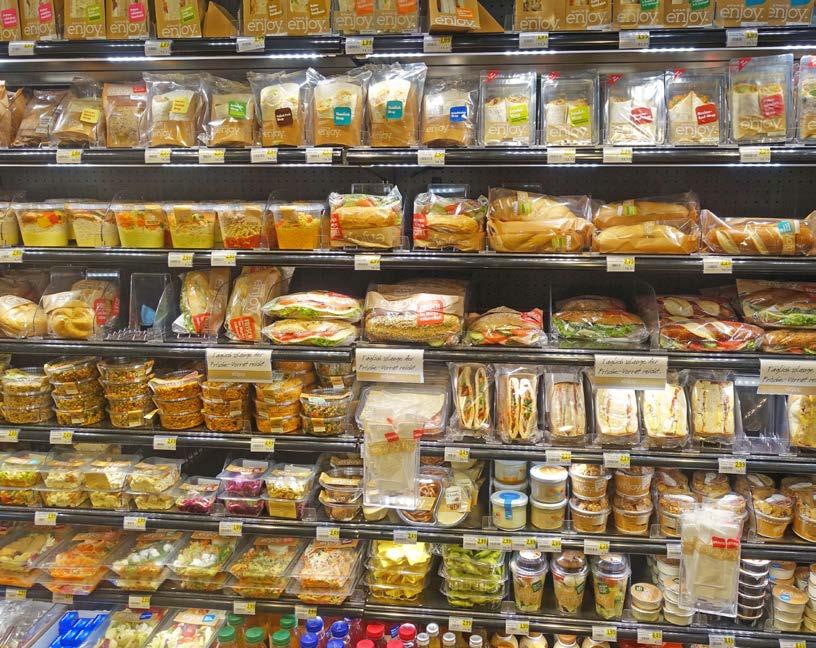
designed a market of the future. They set standards for online shopping, complete with a pick-up station, electronic price display and a mobile phone charging station on the one hand and a delicatessen snack-bar on the other. Customers looking for the next meal will find everything they need in the first couple of yards, whether to eat on the spot or in one of the surrounding commercial businesses. There’s something for everyone: very respectable-looking topped bread rolls in the snack counter, and alongside there’s also a hot buffet with meat loaf and schnitzel. Those in a great hurry will find pre-packed sandwiches,
++ All-round service in the modernized “Billa Market of the Future” in Perfektastrasse. The drinks bar for refills is at the front left, the snack counter is behind at the left, in front of it freshly pressed orange juice and coffee vending machines, a selection of snacks of all kinds for those in a hurry, with a mobile phone charging station and seating alongside. Not in the photo: the free-of-charge microwave. Eyecatchers in the special placement: any amount of donuts, while underneath there’s also spelt bread – a 90-gram example for EUR 1.15 and two 70-gram vegan fritters for EUR 1.98 (large). The chilled snack display is a feast for the eyes, visibly fresh, salmon and maatjes herring, various kinds of cheese, salami, ham or also just with vegetables. Under that there’s a shelf with hot snacks like batter-coated Debrecziner (Hungarian) sausage, cheese twists with salami or even a tomato-mozzarella sandwich, pizza roll and curd cheese börek (savory Turkish pie). Payment is at an automatic checkout. The customer feeds money into an automatic till and receives automatically dispensed change
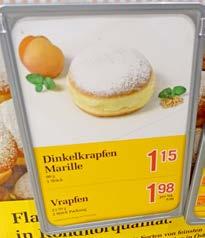
wraps, sushi, pre-sliced fruit, salads etc. in the chiller display beside the self-service coffee machine. The drinks shelves offer an almost exotic variety, and of course there’s also a dispenser available for freshly pressed orange juice. Payment is at a checkout where staff, otherwise required only at the hot buffet, key in prices while consumers drop money in and receive change. Replenishing stocks of goods, clearing tables, there’s no need for any additional staff. Anyone who prefers to buy the individual components of his or her meal doesn’t have far to walk. There are adjoining baked goods and sausage counters directly

behind the delicatessen snack-bar, with ready-packed cold cuts and mayonnaise salads opposite them, as well as a lavish shelf with healthy nut and berry snacks. This customer has to walk slightly further for drinks, but still towards the checkout or the optional self-checkout. However generous and open the entrance zone with the snack bar and convenience items appears to be, the shelves in the rest of the market give a cramped and crowded impression. Whereas an atmosphere of wellbeing prevails in front, there’s product pressure at the back. +++

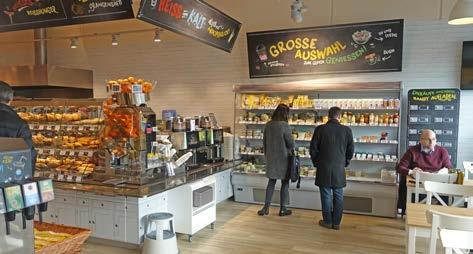

Business consultant Christine Behringer has studied price trends on the Austrian baked products market for many years. The conclusion from the 2017 price survey: clear differences, mainly relating to key articles.
bbi: Mrs. Behringer, you recorded baked products and drinks prices in Austrian chain store bakeries, in the food retail and in discounters in April and November this year. Were there clear price changes within these seven months, and do they run through the entire range of baked goods and all sales channels?
+ Behringer: Prices for baked goods trended very differently in the various sales channels. The classical food retail reduced its baked products prices by around 20% compared to a survey in April last year, and by as much as 28% compared to a survey in the fall of 2015. Spar was ahead of all the others, and can still be regarded as the most economical supplier today, in front of Hofer and Lidl. Chain store operators increased their prices only slightly.
+ bbi: Were there price changes of a similar size for drinks?
+ Behringer: In the case of non-alcoholic drinks, most chain store operators kept their prices stable or only slightly higher compared to the 2015 survey. The food retail increased prices slightly more, but discounters asked 7% more for non-alcoholic drinks last year than in 2015. Nevertheless, prices for non-alcoholic drinks in the food retail are almost 50% below those of chain store bakeries, and those charged by discounters are once again nearly 60% under those of the classical food retail. For hot drinks, insofar as they are served at all in the food retail and by discounters, the differences are of a similar size.
+ bbi: When you separate the baked goods prices of chain stores, the food retail and discounters, which price difference is the most conspicuous?
+ Behringer: In general, I can confirm that there are enormous differences between the various suppliers. For all companies included in the comparison study, and for comparable baked products, there is a difference of around 60% between the prices of the lowest cost supplier and the most expensive chain stores. However, this comparison is flawed because when buying baked goods, especially from chain stores, it’s not just a question of price but also of factors such as origin, regionality, artisan manufacture, trust and confidence, and of course the shopping experience and service on the spot as well.
+ bbi: Are there products whose prices lie relatively close to one another right across all the sales channels?
+ Behringer: That question can be answered with a quite simple but clear “No”. Prices are not close together, and certainly not identical, in any of the product categories for which we recorded prices.
+ bbi: How large was the average gap between chain stores compared to the rest of the food retail and/or to discounters in 2017?
+ Behringer: For the baked goods surveyed, there is a 45.3% difference between prices in the chain stores and those of the food retail, and the difference compared to discounters is 49%. For the non-alcoholic drinks that were surveyed, there is a difference of 47% between the prices in chain stores and in the food retail, and relative to the discounters’ prices the difference is 60%.
+ bbi: You have followed the trend in prices for many years –is the price gap between chain stores and the retail widening, or does it stay constant, or does it differ depending on the product?
+ Behringer: For baked products, the price gap between chain stores and the retail has increased for many years. Naturally, those product prices that consumers perceive as benchmark values are in the foreground in this respect. Most consumers know the cost of a roll, a croissant, a donut or a standard pastry. For these products in particular, the food retail and the discounters attempt to position themselves in a promotionally effective way by reducing prices rather than keeping them stable.
+ bbi: Can big price differences be attributed to the location and/or federal sate in which the products are offered?
+ Behringer: We have a clearly defined, standard shopping basket for which we collect prices to enable a comparison. Of course it contains rolls, Kornspitz, croissants, cheese envelopes and a couple of other things, but also a kilo of mixed bread. When I list the prices of this shopping basket by federal states, I see that this specific shopping basket can be bought around 19% more cheaply in Vienna than in Graz.
+ bbi: So Vienna is not at all the most expensive area if one wants to buy baked goods. Does that apply equally to the food retail, discounters and chain stores?
+ Behringer: The food retail and discounters operate with national prices in Austria, so this difference originates from the chain store businesses. Of course that has something to do with the fact that Vienna is the biggest city in our comparison, and is also where both the competition situation among chain stores and competition by the food retail and discounters is the fiercest.
+ bbi: Austrian chain stores certainly represent a considerable price spread. For which products is that most clearly noticeable?
+ Behringer: If we only look at the prices in chain stores, the price spread for an unfilled croissant is between EUR 1.05 and EUR 1.69, which is a difference of around 60%. I can buy donuts from the most favorably priced supplier for EUR 1, and from the most expensive for EUR 1.50, which is a 50% difference. The difference for a kilo of mixed bread was more than 80%,
For more than 30 years, American Pan has led the way in baking tin and tray innovation; from energy-saving designs to industry-leading coatings. We don’t believe in “one size fits all.” By engineering trays, applying exclusive coatings and providing economic refurbishment programs to fit your exact product and facility needs, we help you save money, increase quality, and outpace the competition.
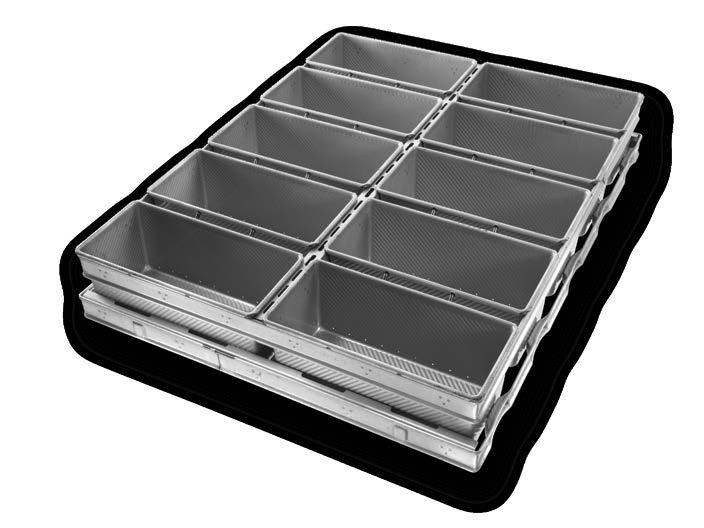

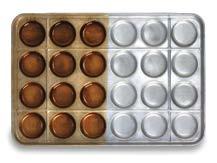
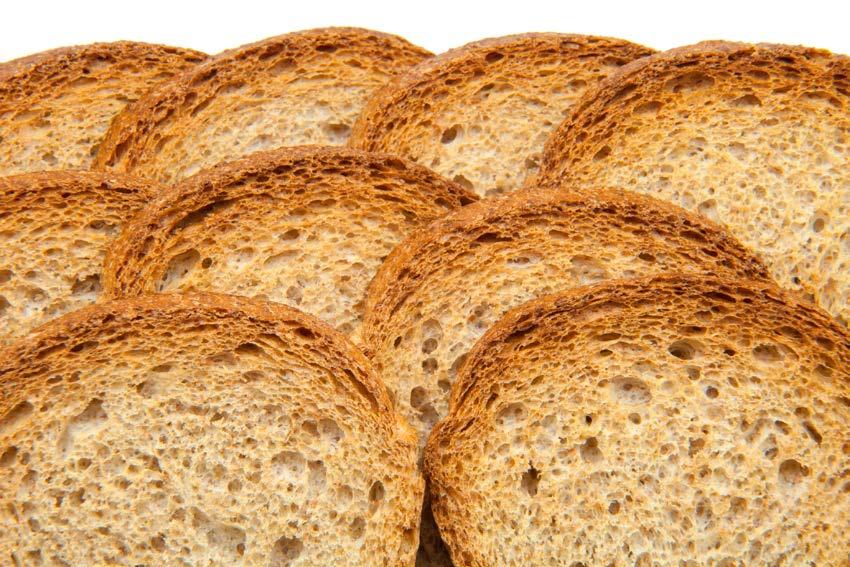

Christine Behringer’s study can be ordered in German from Behringer AG, Fürst-Franz-Josefstrasse 5, FL 9490 Vaduz, Liechtenstein, or from c.behringer@behringermanagement.ag, price: EUR 1,450 / delivered as a PDF – within 3 days from the order.
and in this case both suppliers were even from the same town. But as said above, what is offered by the chain stores does not consist just of the price.
+ bbi: You also look at the prices for snacks, and this time you collected the entry level price class for topped baked goods. The spread is between EUR 1.20 for Bäcker Schrott and EUR 3.10 at Felber, both operating in Vienna. Does one start with a meatloaf bun and the other with a caviar roll, or how do such differences come about?
+ Behringer: I don’t think that describes the differences. When we say entry level price class, we mean the most favorably priced product, and in most cases that is sliced sausage in a roll. That was also true at Bäcker Schrott, but at Felber the most favorably-priced we found was a filled lye croissant. They are quite different products. What we wanted to demonstrate was where each baker enters the snack business. Of course that also had something to do with a branch’s geographic location. At a rail station where many thousands of commuters rush through every day, I need a product range as well as an entry level price product different to those in a bistro in a middleclass shopping street.
+ bbi: I assume you have also already looked at prices in the retail’s recently emerging snack departments and among discounters. Although they are not included in your price comparison this year, where do you estimate they would end up, would it also be at half of the chain stores’ prices?
+ Behringer: Definitely not as an average of the chain stores, but as we have seen up to now, there certainly are price
differences in the upper double-digit range between the most favorable offer in the food retail and the most expensive chain store. A meatloaf roll is available in the food retail for as little as EUR 1.38, whereas it costs EUR 2.80 in the most expensive chain stores we visited, which is at least 100% more. For an escalope roll, the difference between EUR 2.01 in the food retail and EUR 3.60 in the most expensive chain stores was not quite as large, but was still nearly 80%.
+ bbi: You recorded coffee prices only for chain stores. Is there a similar price spread there?
+ Behringer: Here again, however, we find considerably lower prices. Spar’s Enjoy concept offers coffee, for example, at the following prices: espresso EUR 1, diluted EUR 1.50 and cappuccino also EUR 1.50 EUR. In chain stores, diluted costs between EUR 2.30 and EUR 2.90, and cappuccino between EUR 2.50 EUR and EUR 3.30.
+ bbi: BackWerk branches in Vienna, Linz and Graz appear in your price survey – compared to the chain stores, are discounters still the suppliers who offer the lowest prices?

+ Behringer: No, BackWerk’s prices are now almost at the level of the chain stores. But in fact there is an explanation for that. BackWerk no longer profiles itself as a discounter but as a favorably-priced food service supplier. The features of the product range are completely different to when it was still in its early years. It will be interesting to watch what effect the food retail’s entry into the out-of-house market has on BackWerk in the next few years.
+ bbi: Austrian baked goods producers strongly emphasize Austrian raw materials, some of which became scarce and expensive in 2017/2018. Will that be reflected in prices charged by chain stores, the retail and discounters next year, or do you expect differences?

+ Behringer: Raw materials are only one aspect of the price calculation, and undoubtedly not the most important influencing factor. The way a supplier shapes his image, whether we are dealing with a national supplier, or whether someone can score points with the home country card or with selected raw materials will probably be more decisive in the next few years. Personally, I expect a stable price trend.
+ bbi: Mrs. Behringer, many thanks for the interview.




Christina Ostermayer took over the bakery in Vienna’s Seventh District from Horst Felzl two years ago. The former top manageress from the Do&Co catering group carefully restructured the business according to her vision, and opened a fourth location in the First District.


It is clear to Christina Ostermayer that the company’s heart beats in the production facility in Schottenfeldgasse, where Horst Felzl in his time defined the quality of the baguettes and breads with which he made a name for himself in the district.
Because of that yardstick, there has been no cultural change in the bakery for the thirteen qualified bakers working there, including three university of technology graduates, although one or two other products have been added. The production facility is also scheduled to remain in Schottenfeldgasse, even though many people live around about it. Ostermayer says the neighborhood is good, people know and appreciate one another and show consideration for each other. That’s also the simple reason why the business does not have organic certification. According to Ostermayer: “Everyone knows we work sustainably and throw nothing away if possible. Certification yields no additional benefit in that situation. I prefer to invest in things that help to avoid noise.”
To ensure that everything produced is also eaten if possible, there are bread vending machines at the production site and
the branches in Kaiserstrasse in which baked goods left over after closing time are offered at half price. “They are always empty next morning.” As in France, almond butter and a trip through the oven breathes new life into unsold croissants as they become almond croissants, while others are dried and flavored as baked snacks. Schools collect what is left over for their canteen, and the final residue goes to goose farmers. According to the 52-year-young proprietor: “Of course we take great care not to produce any surplus quantities. Occasionally something is out of stock in the evening as a result, but our customers accept that because they know us and they understand how we work.”
Ostermayer’s professional handwriting is especially visible in the catering business, which has been considerably expanded in the past two years, both in the branches and also as a company caterer in the city center. Of this, 80 to 90% is
based on baguettes made from French flour with very little yeast and a 24-hour dough process, cut into thirds and given a high-quality finish and decoration. Quality and presentation are the all-important factors, but prices are still quite affordable. Breakfast with a handmade roll and soft-boiled organic egg is available for EUR 2.90, and at the weekend there are tempting puff pastry galette pancakes with three different kinds of cheese for EUR 3.30, or a Scandinavian-style breakfast with scrambled egg, salmon and dressings to go with the baguette for EUR 8.70 EUR. Avocado bread will cost you EUR 5.10, and a baguette with roast beef or organic smoked meat from Antoshini (a Viennese specialty dealer known all over the town) is EUR 5.60. Lunchtime business has also expanded considerably, with fresh soups, quiches and soufflés. There is now also a demand throughout the whole day for hummus or eggplant dips with a handmade roll or 1/3 of a baguette for just EUR 3.

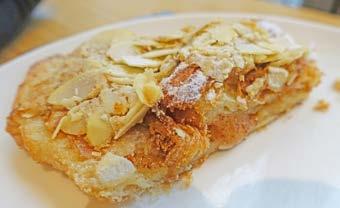
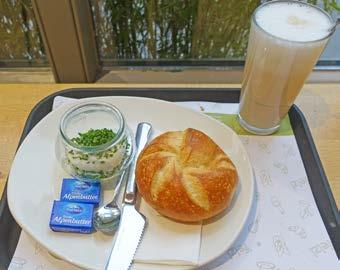
Selection and quality make an impact. There is another distinct demand surge from 18 to 19 hrs., both inhouse and takeaway, for which there is already replenishment production in the afternoon, with caution of course – ‘throw nothing away’ is part of the company’s creed, and incidentally so is environmental awareness. After the morning quality inspection in the bakery, Christina Ostermayer cycles through the city on her round through the branches and to visit customers. The purchase of two load-carrying bicycles for deliveries is currently pending.
Her signature is also clearly apparent in her personnel policy, where she has made many changes. The catering professional behind it all is noticeable. Her sales staff – full-time and students – are given a manual and a thorough introduction, but no sales training. Instead they take part in a workshop during which professionals from the nearby community theatre teach them the fundamentals of dramatic art. Instead of learning how to serve, they learn to stand on the stage and give their best performance. It is enjoyable and strengthens self-confidence and loyalty to the company. Ostermayer: “No longer can you impress potential employees with money and position. What they want nowadays is a cool team, enjoyable work and a company to which they can be committed.”
The production operation could still cope with two more good locations if a day shift is introduced, but there are no plans for any more. Another attractive sales opportunity are the open-air markets popular in Vienna like Kutschker Market, where Mrs. Pöhl’s cheese stall offers bread from selected top-class bakers in Vienna and its surroundings. Christina Ostermayer is sure that: “The more good bread is offered, the more people will re-accustom themselves to quality and will buy from good bakers.”
She herself also arrived in her new job after taking the plunge into the bakery adventure following a rather long illness two years ago, with backing from a silent partner. “It was the best decision of my life. It was simply about time for me to take decisions and to be responsible for them on my own.” +++


Washing transport crates is a subject whose important aspects include the plants’ energy consumption, space requirement, cleanability and protection from noise, but above all the individual conditions in the bakery company itself.
+This means cratewasher suppliers are often involved in a bakery’s planning processes, and intensive coordination discussions often precede delivery of the plant.
Brüel Systems A/S in Hjørring/Denmark is one of the companies offering cratewashers customized to individual requirements. Before the actual cleaning phase, the company’s plants use heated cleaning water to give a 30 to 120 second soak to the crates etc. that are to be washed. For example, the company manufactured a plant of this kind for a major German bakery in Berlin. The particular case involved a basket washing plant that was required to make do with confined space conditions, and was delivered including a drying centrifuge, buffer storage for folding crates, a basket transport system and matching folding baskets.
The folding baskets are passed through the immersion bath washing plant in a closed state – an upstream S-turner removes residues in the basket. Water including detergent and heated to 48°C flows through the plant in a closed circuit. The advantage of the dipping process that is used is that there is no spray or splashing in the soaking area, and the plant is sealed by the tank at the basket entry. Consequently there is
no need for steam to be sucked away at the inlet side. Moreover, the company says that due to the immersion soaking process the machine consumes approx. 35% less heating energy than a conventional tunnel plant. After being cleaned, the folding baskets run through a centrifuge and are dried. According to Brüel Systems, the residual moisture achieved after drying is less than one gram per basket. The company says the saving of electrical energy for drying compared to drying with a blower is about 85 to 90%. Automated basket storage for the folding boxes yielded space benefits. It requires less than one third of the space that would have been needed for conventional rigid containers.
Hygiene with hygienic plants – this is the approach taken by Colussi Ermes, headquartered in Casarsa della Delizia, Italy. The plants, which are planned according to users’ needs, have rounded edges in the machine interiors and allow access from several sides. The company says big savings are achieved due to the machine’s thick insulation.
The production range includes cabin or tunnel systems for washing crates, with the possibility of selecting various options: one, two or three tracks, horizontal or vertical. The cabins
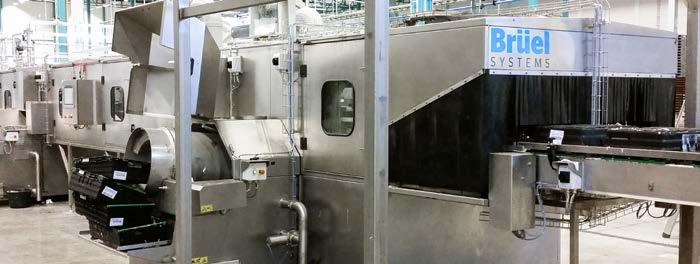











Want superior hydration without adding excess heat to your dough? New Hydrobond technology delivers. Not only does it blend dry and wet ingredients with unmatched efficiency, it also:
• Requires no additional floor space




• Reduces your total mixing time
• Cleans quickly and easily






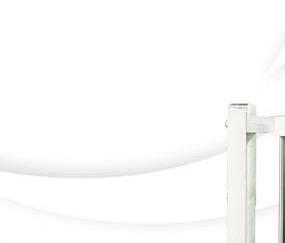
• Reduces heat attributed to mixing energy


• Allows you to mix more dough with same size continuous mixer





 BY READING BAKERY SYSTEMS
BY READING BAKERY SYSTEMS



can be equipped with a centrifugal washing and drying system. The machines can wash transport baskets of various shapes and types, including collapsible, rigid and stackable crates and baskets. Their washing capacity can reach up to 10,000 baskets per hour.
As a supplement to cleaning, the company developed its own centrifugal dryer for basket drying that yields results of 2 grams of residual moisture, no longer needs any heated air and, according to Colussi Ermes, makes do with very low total energy costs. It says experience with many machines it has supplied has confirmed that the solid construction is exactly what gives these plants an extremely long lifetime.
The German company KITZINGER, Flensburg, specializes in tailor-made washing plants to clean crates, baskets, trays, peelboards or trolleys. According to the company, heating energy is important. The washing liquor must be kept hot (cooling takes place through radiative loss of heat to the exterior via the machine’s housing, by spraying the washing liquor itself, and of course as a result of the heat absorbed by the items being washed themselves). Radiative loss of heat to the exterior on this machine builder’s plants is minimized by a fully double-wall insulated washing tunnel, which incidentally also allows the machine’s operating noise to be reduced.
Kitzinger’s most recent developments include the contino universal washing plant for peelboards, baskets up to 150 mm high and trays of all kinds. The items to be washed can be

Cratewasher suppliers (in alphabetical order)

Brüel Systems A/S
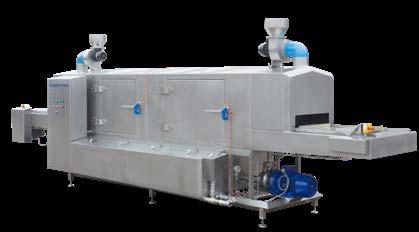
W. Brüels Vej 11
9800 Hjørring, Denmark
Phone: +45 98 92 00 11
E-mail: info@bruelsystems.com
Web site: www.bruelsystems.com
Colussi Ermes s.r.l.
Via Valcunsat, 9
33072 Casarsa della Delizia (PN), Italy
Tel.: +39 0434 86 309
E-mail: info@colussiermes.com
Web site: www.colussiermes.com
Hassheider Edelstahltechnik GmbH
Dieselstrasse 12
32289 Roedinghausen, Germany
Phone: +49 5223 6 85 45 0
E-mail: info[@]hassheider.com
Web site: https://hassheider.com
KITZINGER Maschinenbau GmbH
Altholzkrug 9
24976 Handewitt, Germany
Phone: +49 461 9 53 66
E-mail: info(@)kitzinger-gmbh.de
Web site: www.kitzinger-gmbh.de
MEIKO Maschinenbau GmbH & Co. KG
Englerstr. 3
77652 Offenburg, Germany
Phone: +49 781 20 30
E-mail: info@meiko.de
Web site: www.meiko.info/en
REICH GmbH
Marienberger Strasse 47
83109 Grosskarolinenfeld, Germany
Phone: +49 8031 80 95 690
E-mail: info@reich-gmbh.net
Web site: www.reich-gmbh.net
input in a random jumble, and large maintenance doors allow unimpeded access to the washing tunnel.
Cratewashers made by Reich GmbH in Grosskarolinenfeld clean 150 to 5,000 baskets per hour. They operate with 1 or 3 tracks and with 1 or up to 4 main washing zones. If 2 main washing zones are planned, example, the items being washed pass through the following cleaning phases:
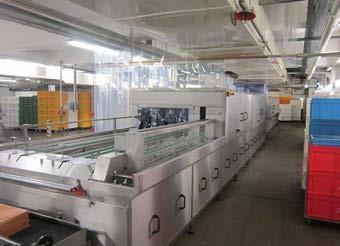
+ Prewash zone (process water from main washing zone 2)
+ Main washing zone 1 (fresh water with added detergent)
+ Treatment zone (time for the detergent to act)
+ Main wash zone 2 (mechanical cleaning by water pressure)


+ Rinsing zone (with fresh water from the process water pipe)
+ Drying zone (air-drying by radial blowers)
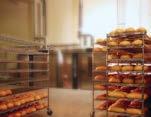
The modular plant components can be set up in an I shape, L shape or U shape depending on space circumstances. This is said to allow automatic transport crate stacking and de-stacking even in confined space situations. Baskets are carried through the washing plant at an oblique angle so consequently, according to the manufacturer, there is no water entrainment within the zones. The company also offers the SLT 6 centrifuge dryer, said to achieve a residual moisture level of 1 to 2 g per container and to enable an energy saving of up to 90% compared to conventional dryers. According to the manufacturer, with its maximum noise emission of 75 db(A), it is also no noisier than a spin-drying domestic washing machine. Its lifting mechanism allows a wide variety of crate types to be dried in the dryer without any machine modification.
The product portfolio of Hassheider, Rödinghausen/Germany, also includes tailor-made washing plants. The plants can clean lift trucks and loading trolleys, large-volume containers, Euro-crates, baking trolleys or baking trays. According to the manufacturer, its characteristic features are its minimal water consumption due to water recycling, and also as a result of the adjustable nozzles, precise guide rods and stainless steel conveyor chains. There is a choice of various filtration options, types of heating and, depending on the capacity, different dimensions and installation.

According to Meiko, Offenburg/Germany, the M-iQ K74 is an uncomplicated all-round crate and basket washing machine developed specifically to meet the needs of artisan bakers. The machine washes crates and baskets of various formats without juddering or skidding. In contrast to conventional conveyor belts, the machine’s chain is almost completely permeable, which assists hygienic cleaning. The water jets themselves are said to reach even the most stubborn dirt in poorly accessible corners and angles. +++
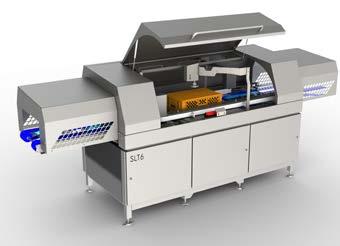
Speckli* and shortbread with hemp have been part of the product range of the Swiss confectioner Confiserie Speck in Zug, Switzerland, since the fall of last year. These baked products are a side issue if seen purely as a proportion of sales, but they are a gateway to another target group: young people find the offer “cool”.
+Proprietor Peter Speck remembers the innovation meeting when the sales manager put forward his idea: “How about trying something with hemp.” Chocolate-hemp cookies and shortbread with hemp and ginger are also part of today’s product range. It’s all completely legal. Speck uses CBD hemp (CBD: cannabidiol) for his hemp baked products, which the company sells at its hemp counter. For cash.
The certificate that the supplier must include with the delivery, thereby confirming that its product complies with the permitted limit of 1% in force in Switzerland for the narcotic THC (tetrahydro-cannabinol), is important. Peter Speck says: “Obtaining the required amounts of certified hemp on the market proved a challenge.” However, a low THC content in the raw material is ultimately important to allow compliance with the lawful limit in the finished baked goods, which in Switzerland is 2 mg of THC per kilogram of product.
The entrepreneur has no fear that associating the name Speck with the products could push them into a pot-head corner. “We wanted to attempt something new. Putting it rather provocatively, our intention was not to bake a sort of spliff-head cake. What we wanted was a natural stimulant that smells and tastes good, and I think we have succeeded in that. The products have no narcotic effect.”
Per week, the confectioner sells between 500 and 1,000 hemp cookies and 30 to 60 packs of shortbread (15 pieces in a pack). The hemp is bought as flowerheads and milled in the company. Peter Speck reports that “We mill the raw material like a spice. The CBD in hemp is fat-soluble, so it makes sense to use the raw material together with a fat mix.”

The proportion of CBD in the fully-baked products is 38 mg/100 g (shortbread) or 13 mg per piece for Speckli cookies. Speck
explains that CBD represents the positive cannabinoid constituents of hemp, which is said to have a relaxing, focusing and to some extent an anti-inflammatory action. “Most purchasers see the baked item simply as a lifestyle product.” The feedback from young people has been very good: “Hey cool that you’re checking out something like that.” Peter Speck is pleased. “We are a traditional Swiss confectioner, and in this way we address a completely different public.”
A hemp Speckli costs CHF 3.90, i.e. considerably more than a normal Speckli (CHF 2.0); a 125 g pack of shortbread can be had for EUR 18 EUR. Peter Speck says “The higher price is due firstly to the CBD hemp raw material, which is very expensive by food industry standards. Secondly, our expenses for inspections and when purchasing are very much higher.” As Speck reported in the Luzerner Zeitung newspaper, the correct label declaration was also difficult and expensive. Although no permit was needed to sell the products in Switzerland, their label had to be worded very precisely and the ingredients accurately declared. +++
* An almond cookie in the shape of a small panned cake. Specklis were developed in 1934 by Carl and Konrad Speck, who owned the Confiserie Speck confectioners at that time. Schoggi (= with chocolate) variants of this in-house creation have also existed since 2016
In collaboration with “The Botanicals” startup company in Thurgau, Lidl Switzerland offers two cannabis products. These involve hemp flowerheads, however, which are said to contain only a small level of THC. On the other hand they are said to be rich in cannabidiol, a weakly psychoactive cannabinoid.
•Hygienic Wash-down Design
•Lower Formula Cost (Scaling Weight & Dough Conditioners)


•Toolless Design Reduces Time for Clean Up & Changeover
•Up to 150 Cuts per Minute
• Lower Maintenance Cost

•Servo Driven
Burford’s seeders, toppers, sifters and pan shakers are a perfect match for our Bun Divider

We have been making Make-up Lines for over a decade. We listen to you, the baker, and innovate. Come & Experience the next generation at IBA 2018.
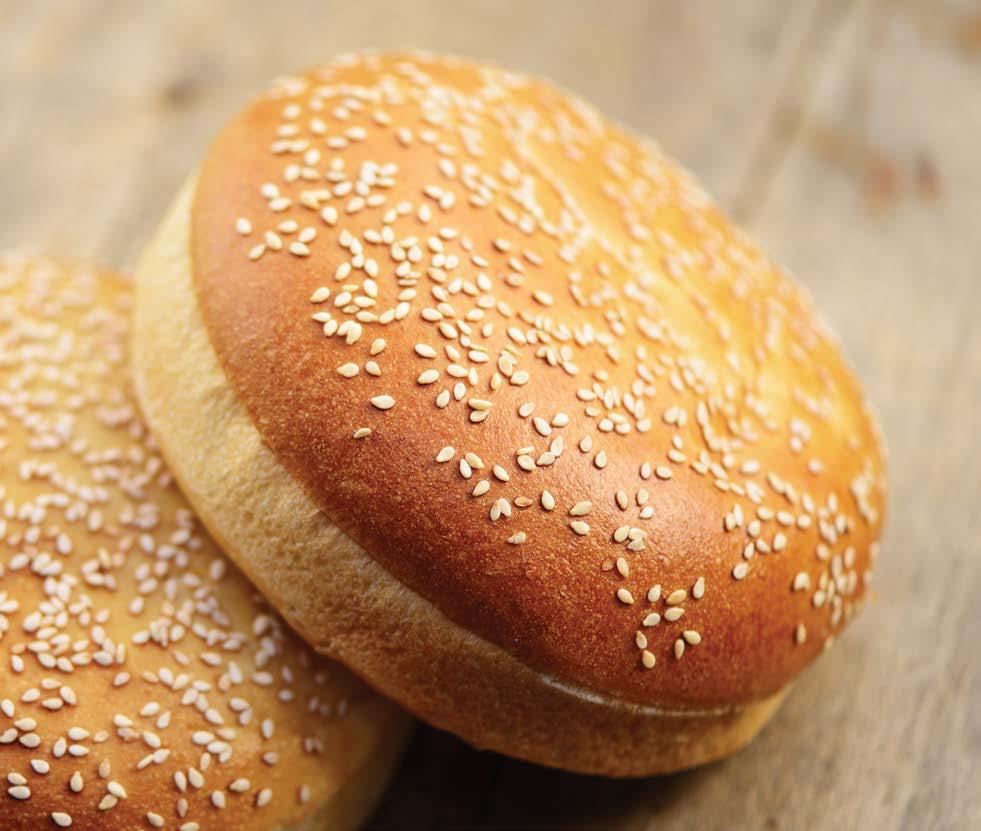
Grupo Bimbo S.A.B. de C.V., a family-owned company based in Mexico City, is the world’s biggest bakery group with a turnover of USD 14.1 billion (2017), which is thus 6.1% above last year’s figure. The company maintains subsidiaries in 32 countries, including Spain. Bimbo announced late last week that it had concluded an agreement to purchase the Mankattan Group, one of China’s biggest bakery groups. Mankattan produces sliced bread, cakes, buns and other baked goods in four bakeries, with which it serves markets in Beijing, Shanghai, Sichuan and Guangdong. Baked products are distributed via both the retail and the food service. This is not the Mexican company’s first involvement in the Middle Kingdom. Bimbo bought the Spanish competitor Panrico’s baked products factory in China in 2006. Bimbo, or Bin Bao as the company is called in China, is now in the market with two factories in Beijing and Tianjin, and employs a workforce of more than 1,400 staff. +++

avoid using the phrase “free from” on product labels as far as possible in future. The only exception is the description “free from gluten”, because it says a special EU regulation exists for this description. The recommendation from Brussels is part of FEDIMA’s response to Regulation (EU) No. 1168/2011, which requires in Article 9.1.c that all allergens listed in an Annex must be identified on labels even if the underlying substance is used only as a process aid. On the other hand, accidental contaminations or so-called cross-contaminants must not or need not be mentioned. Therefore FEDIMA advises its members that they should also draw their customers’ attention to the risk of possible cross-contaminations, and should avoid using the description “free from” in future.
++ Instore oven: combined heat transfer
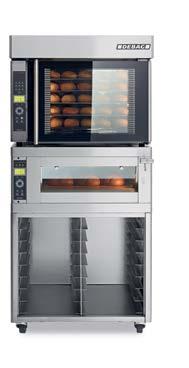
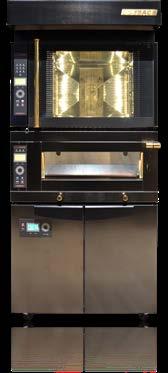
Instore oven constructors frequently offer a wide variety of combined oven types using different heat transfer systems, usually arranged one above another. The majority combine air circulation – for the entire range of baked goods – with a (stone) deck – mostly for pizza. One example is the DILAHELIOS made by DEBAG Deutsche Backofenbau, Bautzen, Germany. The DILA instore oven operates using circulating air, is configurable according to the client’s requirement, and can be equipped with various extras such as its own loading system, an intuitive TOUCHController, automatic cleaning (e.CLEAN.SYSTEM®), radial or high-performance steaming, or the FilialNet oven networking software. The HELIOS multi-deck oven operates with radiant heat. According to the manufacturer, its characteristic features are uniform radiant heat and a stationary baking atmosphere. The baker can influence the baking process directly via a built-in steam generator, which is controllable separately for each hearth.
upo Bimbo’s turnovers; the figures relate only to the first quarter of 2018
Borgesius, the Netherlands bakery group that took over the Bakkersland production facilities from the investor Parcom Capital in 2016, thus becoming the biggest baked products supplier in the Netherlands, has given a new structure to itself and a total of 2,000 employees in its 20 production facilities. The group has been divided up into four independent businesses. The business that will continue under the Borgesius name will supply bread and specialties to the Ahold and Delhaize food retail markets in future. Three separate companies, all bearing the name Goedhart, are responsible for bread and specialties together with sandwiches and baked products for various retail groups, filling stations and food service customers in the Netherlands and beyond. Incidentally, the name Goedhart originates from Goedhart Borgesius, who founded the company in Oude Pekela in 1895. +++
FEDIMA, the European umbrella organization of baking ingredients manufacturers, has issued a recommendation to







